The friends with whom I stay when in New York City live in Queens, in a very nice and peaceful neighbourhood. In 2022, I was here in October, which meant it was autumn and this is traditionally the period of autumn harvest and pumpkins, as well as the Halloween, so most of the homes were decorated in line with this. I understand the harvest and pumpkins, the latter – I don’t.
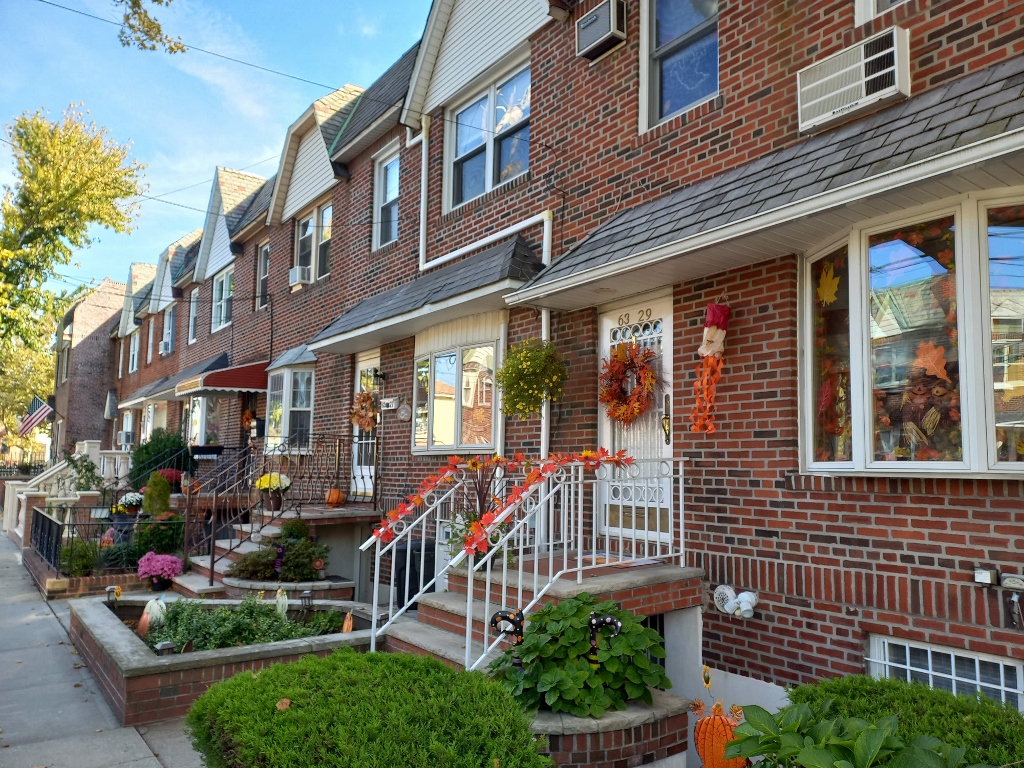 American homes in autumn
American homes in autumn
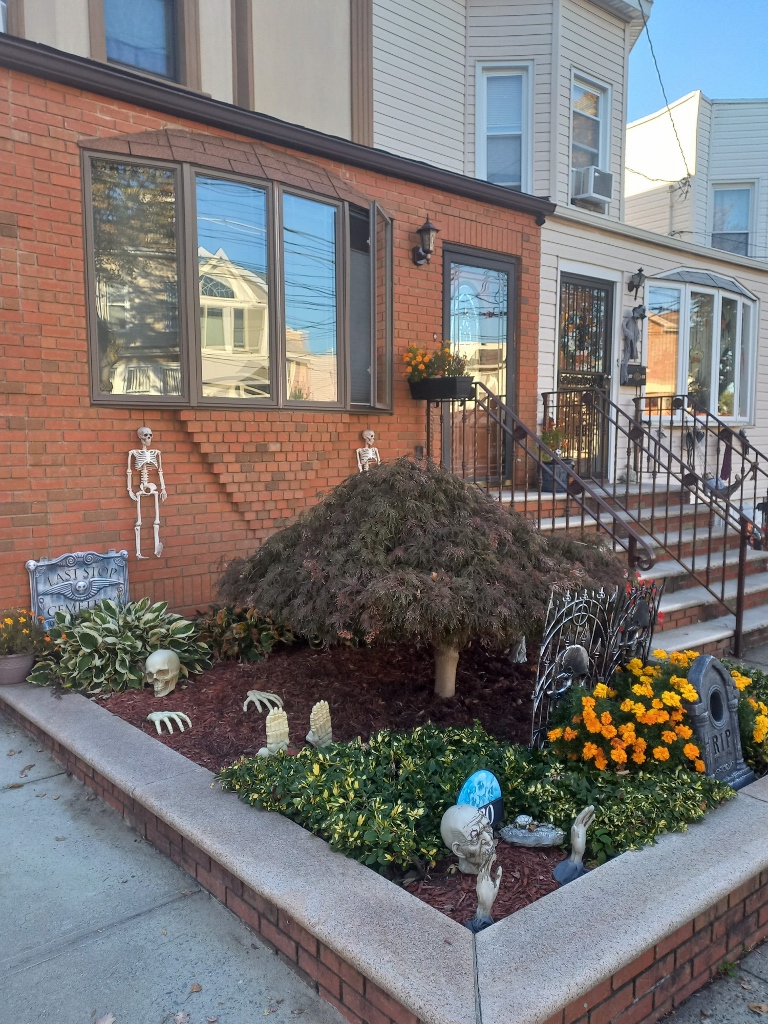 American homes in autumn
American homes in autumn
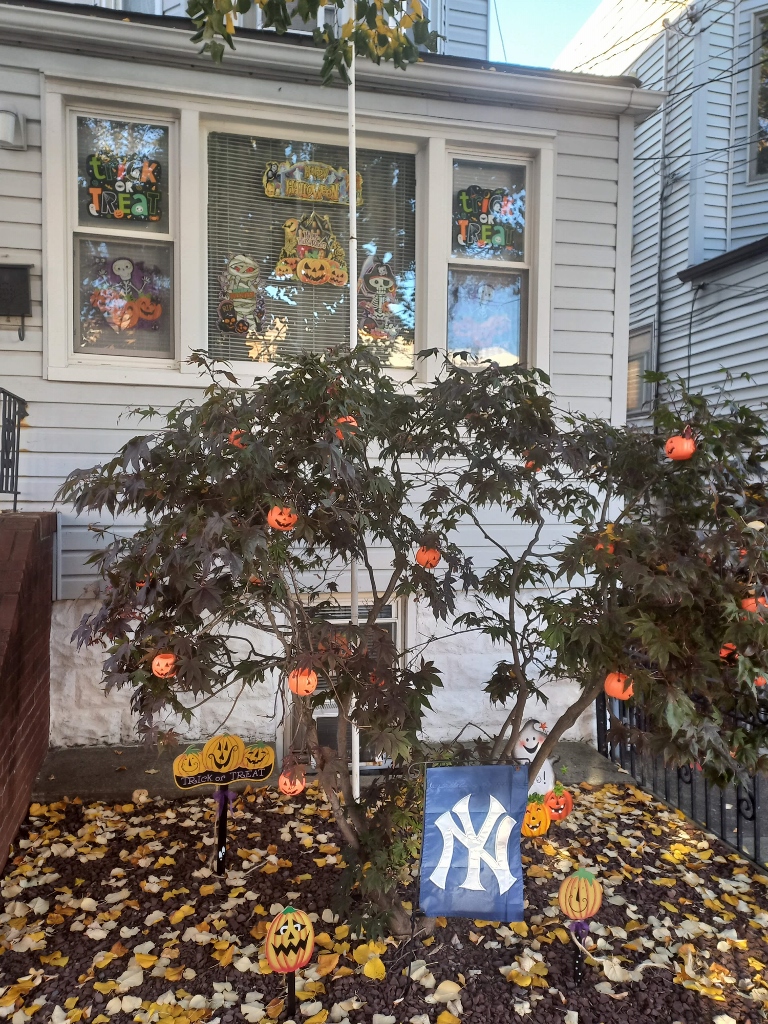 American homes in autumn
American homes in autumn
So, I just enjoyed the beautiful sky and the splendid colours of the autumn foliage.
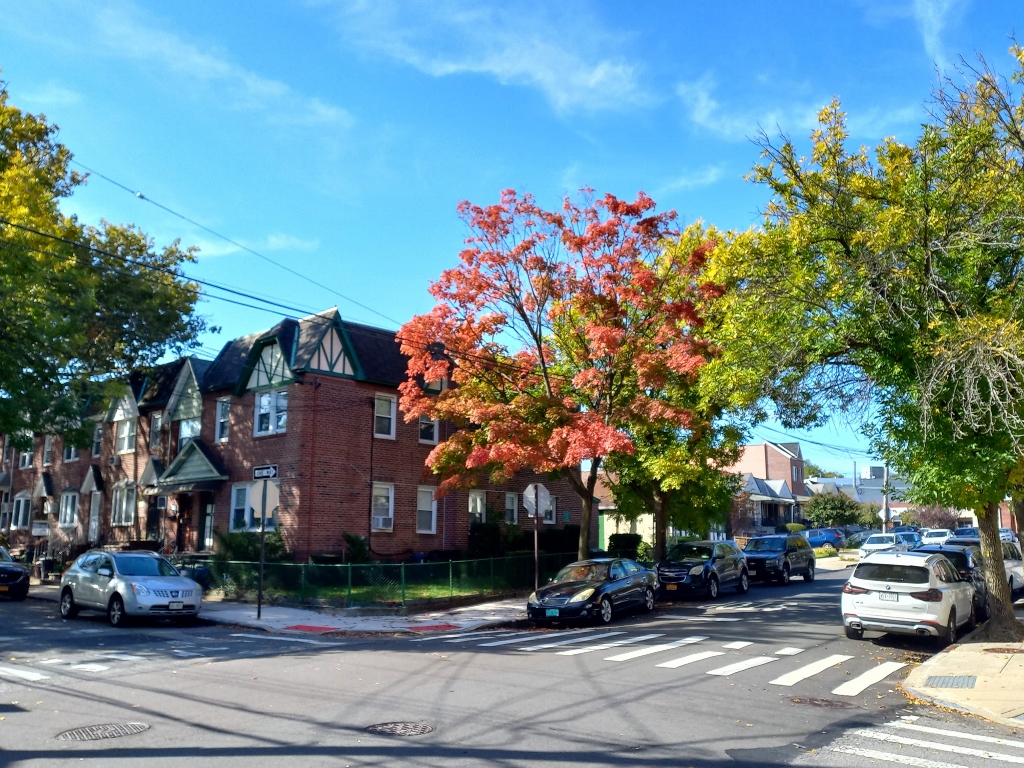 New York in autumn
New York in autumn
On this day, I went for a sightseeing walk around New York City with intention to visit some neighbourhoods in Lower Manhattan. This is the most southern part of the island of Manhattan and, among other things, it encompasses the Financial District, a neighbourhood with a high concentration of the most important financial institutions in the city and by extension in the world, including also both Wall Street and the New York Stock Exchange. On this particular day, I was interested in another type of neighbourhoods.
Some of these neighbourhoods are certainly well-known even outside the USA and NYC, and I had been there from time to time in the past, but this time around I decided to visit them with a little more focus and photographs. I planned just to go for an ordinary walk, without hanging around too much and going into too many details.
The first neighbourhood I went to see was the Chinatown.
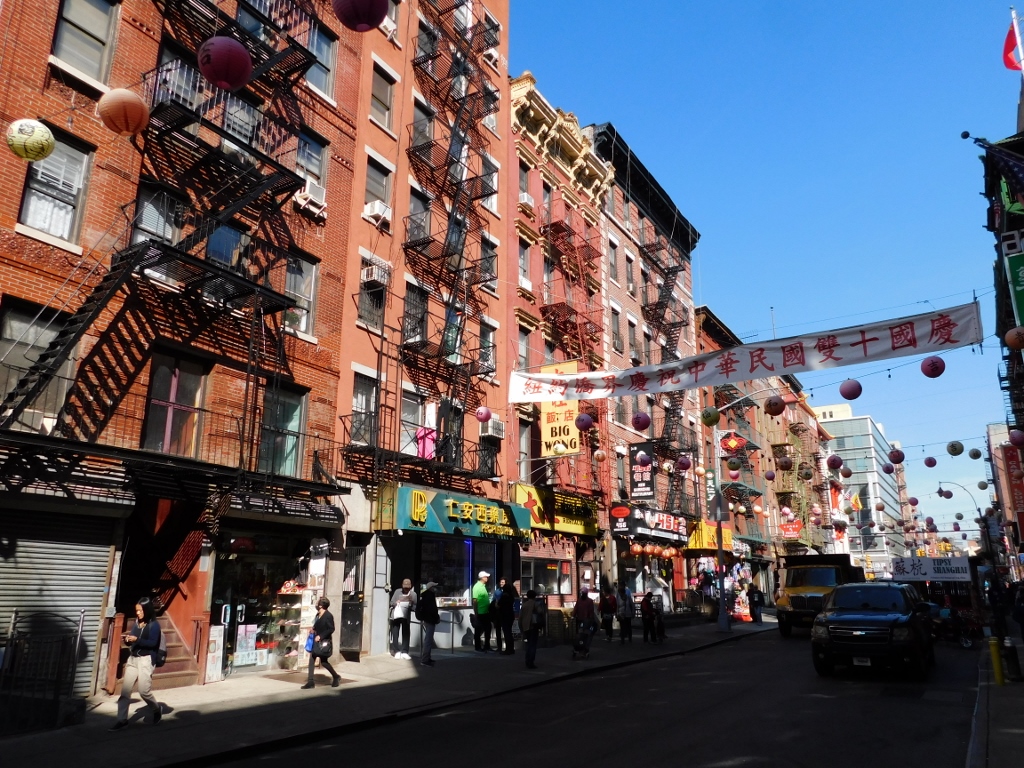 New York’s Chinatown
New York’s Chinatown
Although this neighbourhood is not the only place in New York with an increased concentration of Chinese people, the Chinatown is the one with the highest concentration in the Western sphere, that is, outside Asia. Of course, this is also the place where members of other ethnic groups also live, but over 60% of the residents of this part of the city are of Asian origin.
According to some data, the first Chinese came here and settled permanently around the middle of the 19th century. Over time, the number of the settled Chinese went up and at first they mostly traded with cigars, but they also opened restaurants and hand laundries.
Today, there are certainly different companies and banks that operate here, but while walking along the streets of the Chinatown, you mostly notice food shops – fishmongers, supermarkets and greengrocers, more formal or less.
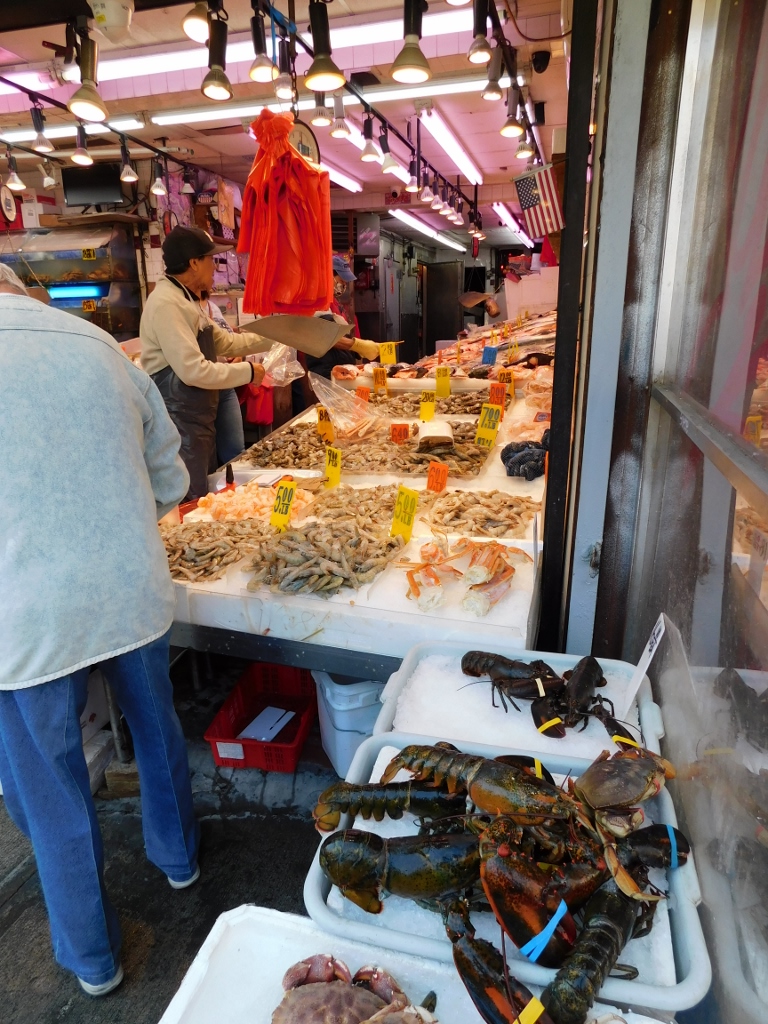 New York’s Chinatown, a detail
New York’s Chinatown, a detail
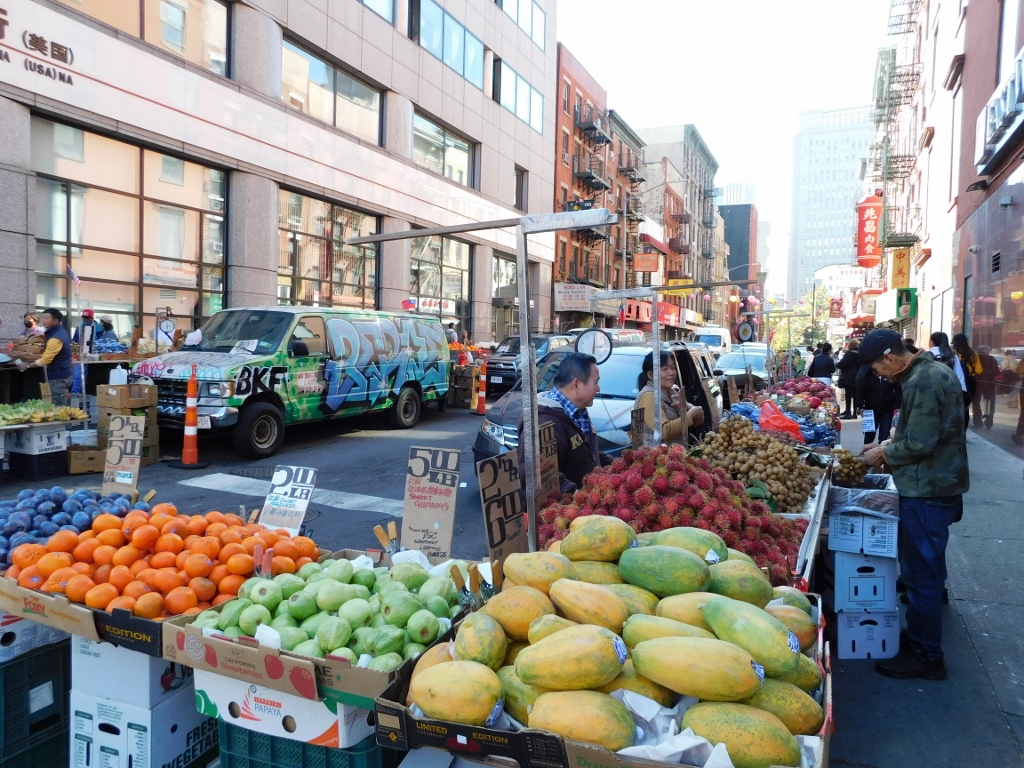 New York’s Chinatown, a detail
New York’s Chinatown, a detail
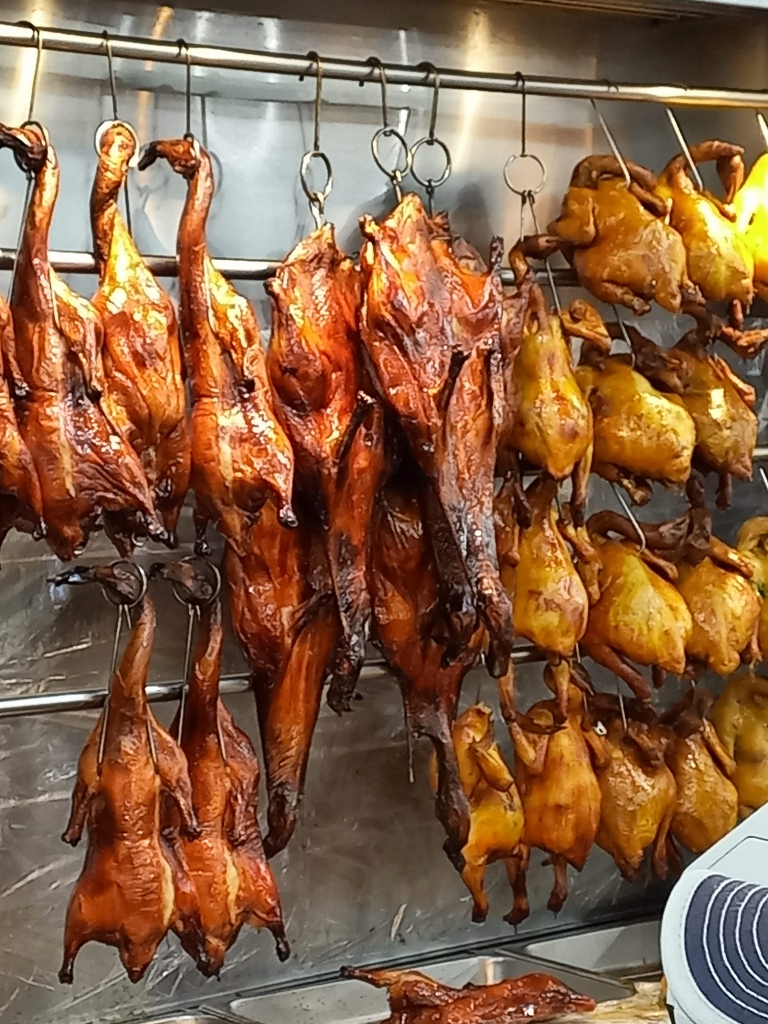 New York’s Chinatown, a detail
New York’s Chinatown, a detail
Needless to say, there are also numerous small shops that offer very diverse goods of Chinese origin.
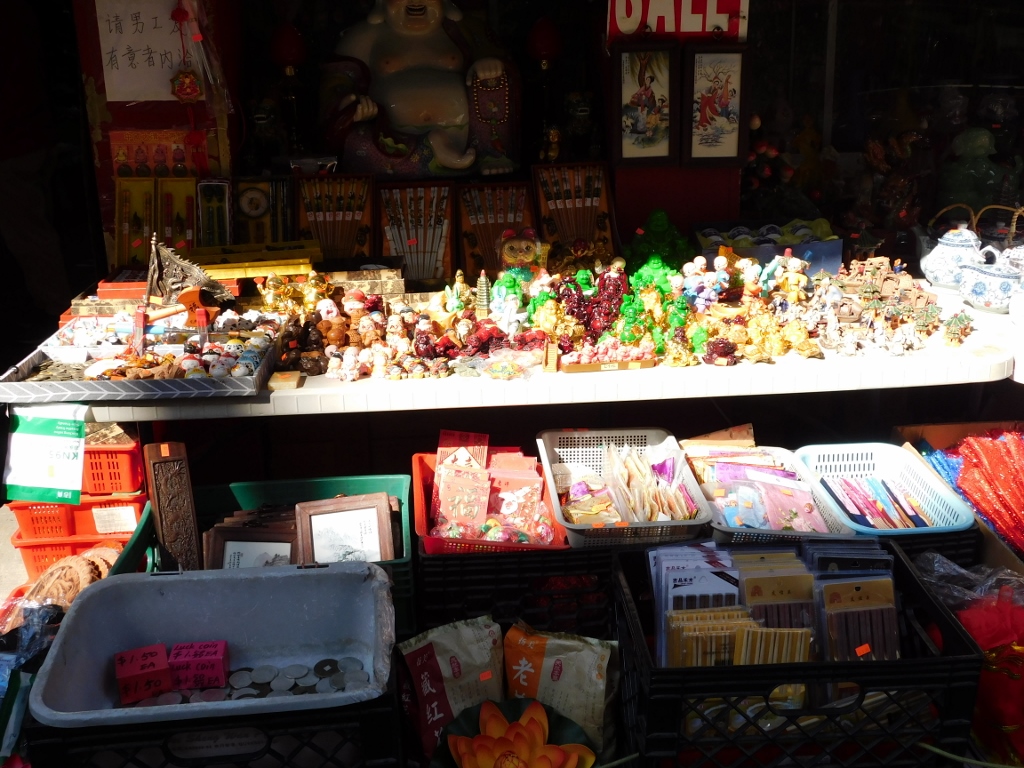 New York’s Chinatown, a detail
New York’s Chinatown, a detail
In addition to the classic trade, Chinatown also has flourishing tourism and restaurant businesses. As I walked around on my own, I came across a few tourist groups led by guides that explained in detail the landmarks of this part of the city. I was quite content with my way of sightseeing and just walked left and right, up and down, following different streets. As for the restaurants, it was still too early for me.
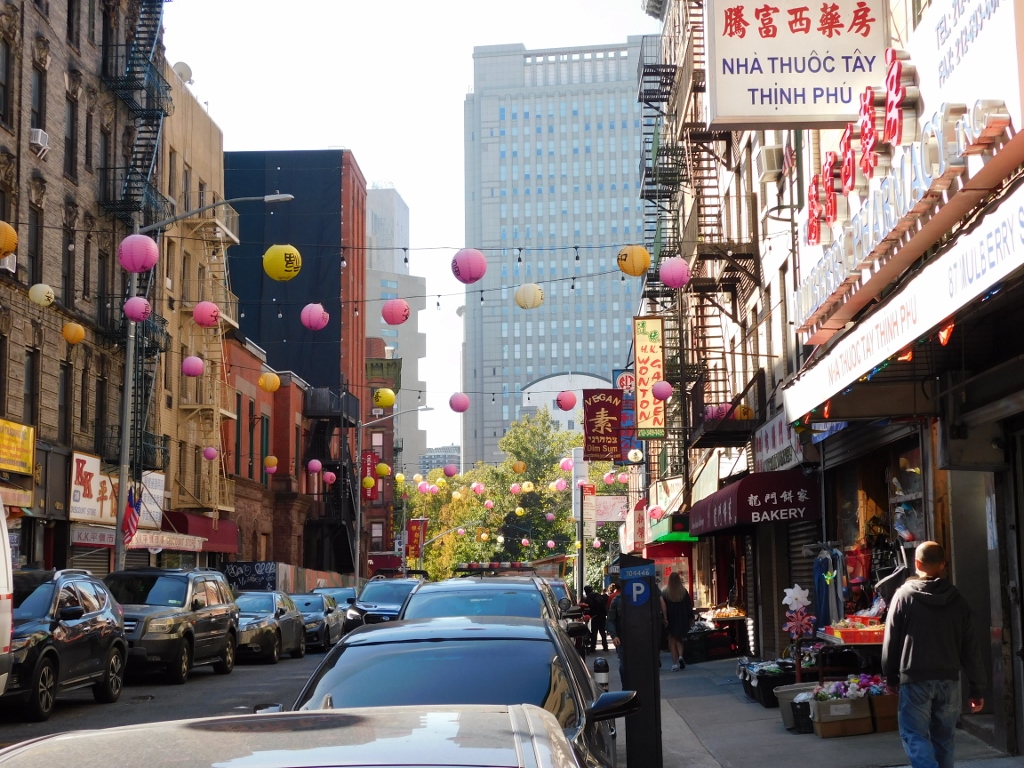 New York’s Chinatown, a detail
New York’s Chinatown, a detail
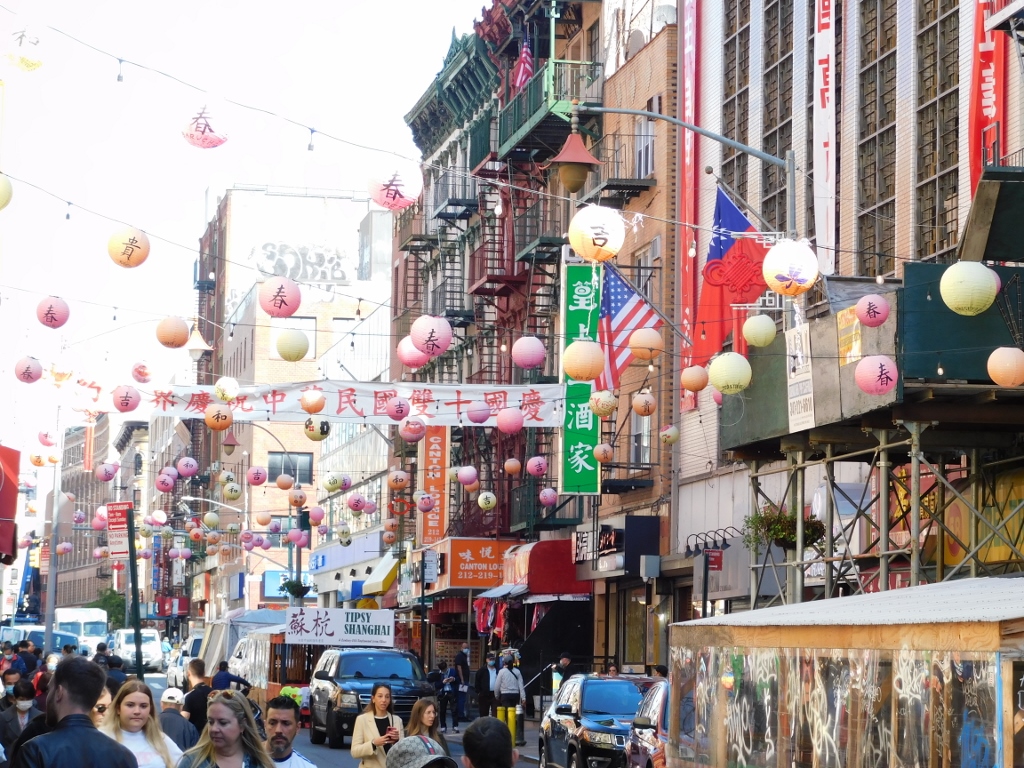 New York’s Chinatown, a detail
New York’s Chinatown, a detail
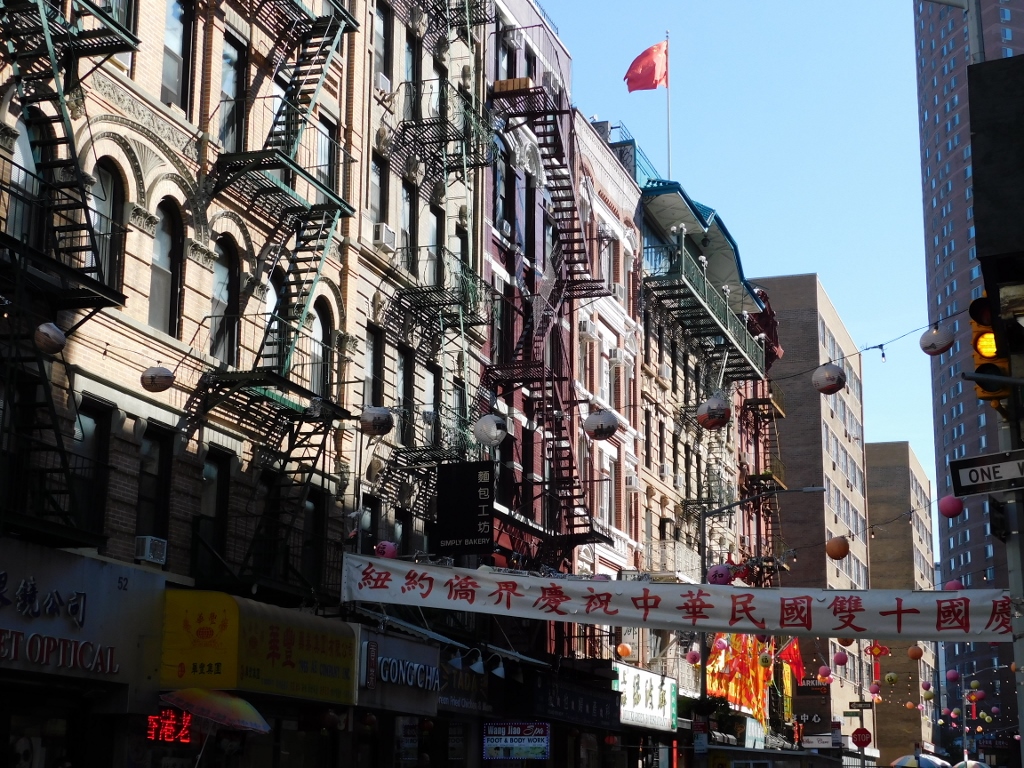 New York’s Chinatown, a detail
New York’s Chinatown, a detail
Following the recommendations from my guidebook, I headed for the east part of the Chinatown, going along a well-known Canal Street that is one of the central axes of this neighbourhood. The street got its name after a canal built here in the 19th century, the function of which was to take away the wastewater towards the Hudson River that flows along the west shore of Manhattan. While here, I could also see the Manhattan Bridge Arch and Colonnade built at the beginning of the 20th century at the entrance onto the bridge leading to Brooklyn.
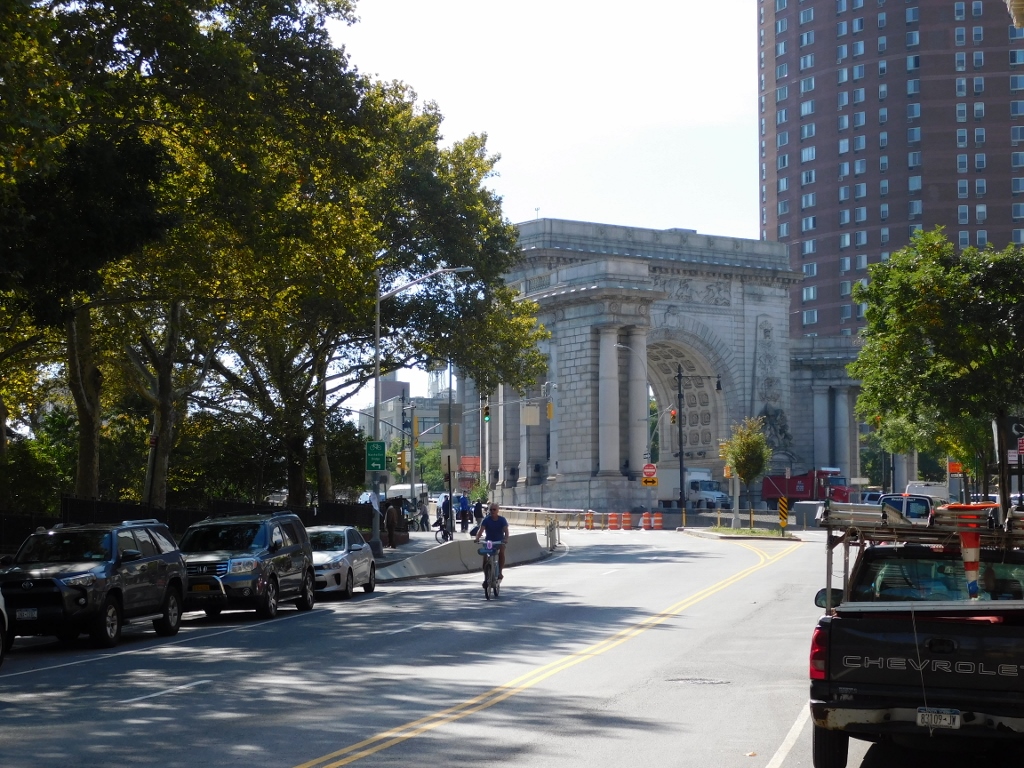 New York’s Chinatown, a detail
New York’s Chinatown, a detail
Then I zigzagged a little since I wanted to reach Orchard Street.
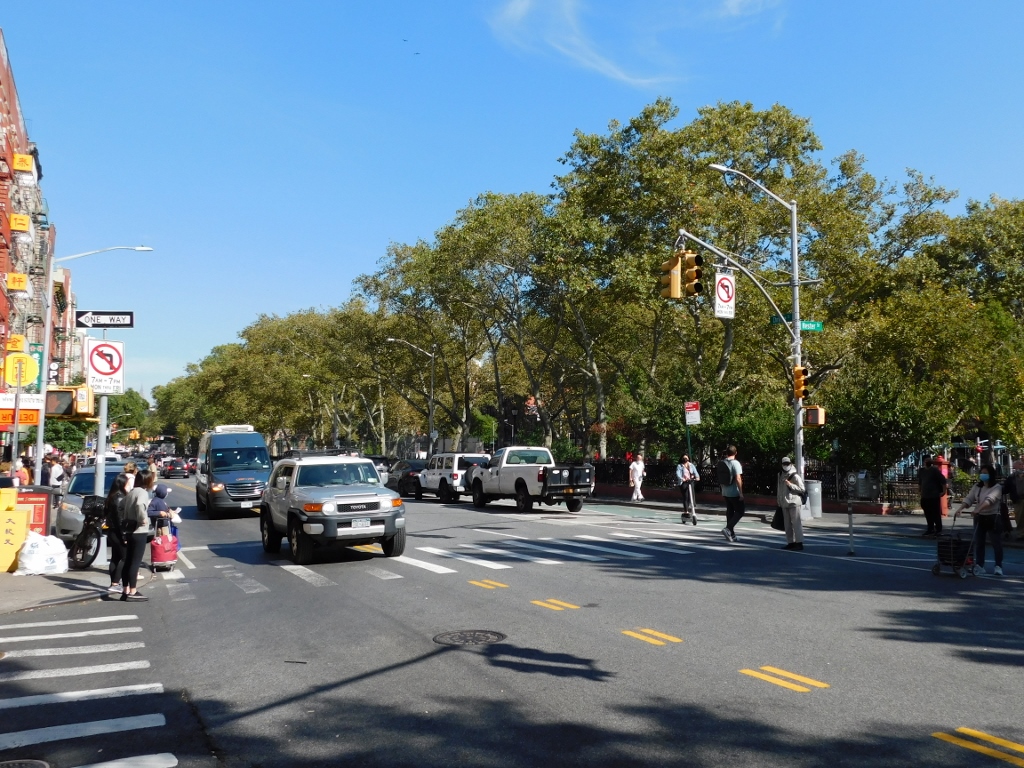 New York’s Chinatown, a detail
New York’s Chinatown, a detail
The meaning of the name of the street is obvious and it is interesting that it was given after an orchard that existed here in the 18th century. Today, this is difficult to imagine.
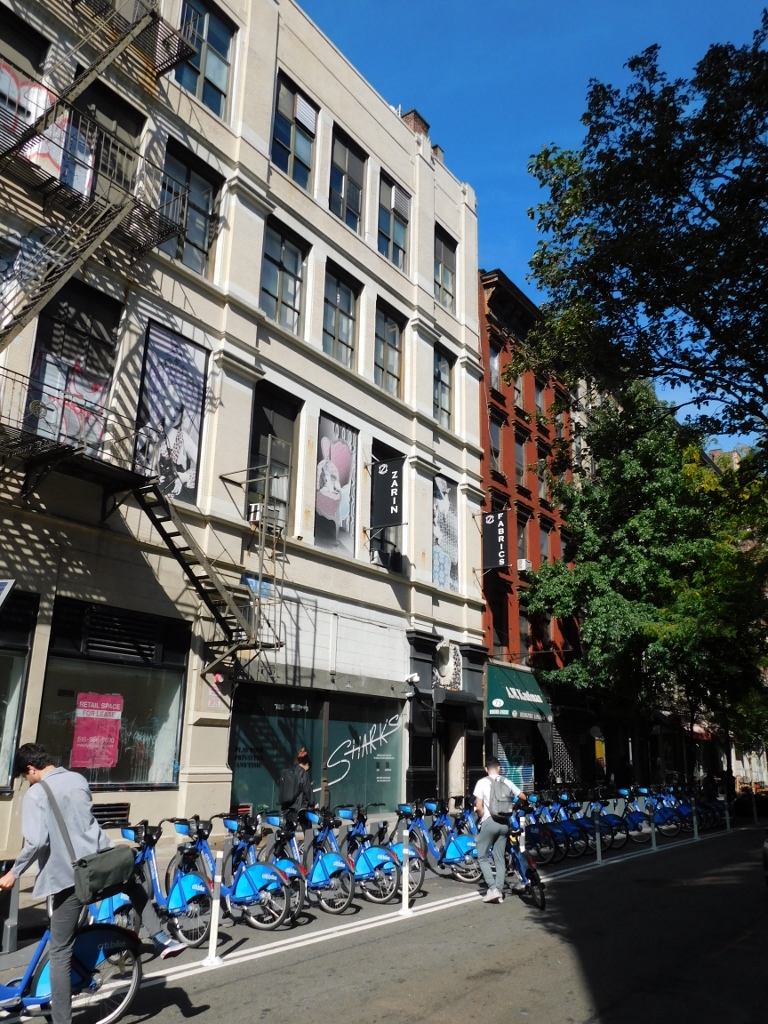 Orchard Street
Orchard Street
Like this whole area of New York, this street is also known for various immigrant ethnic groups that gravitated towards it from the middle of the 19th century. At first, it was a part of Little Germany, but it is primarily known as a Jewish enclave. Every Sunday, the street closes to vehicular traffic and then turns into a kind of a “fair” where shops bring out their goods onto stalls along the street.
The street is also renowned for its buildings with brick facades and fire escapes, but such architectural elements can be seen on the facades facing the streets that cut Orchard Street as well.
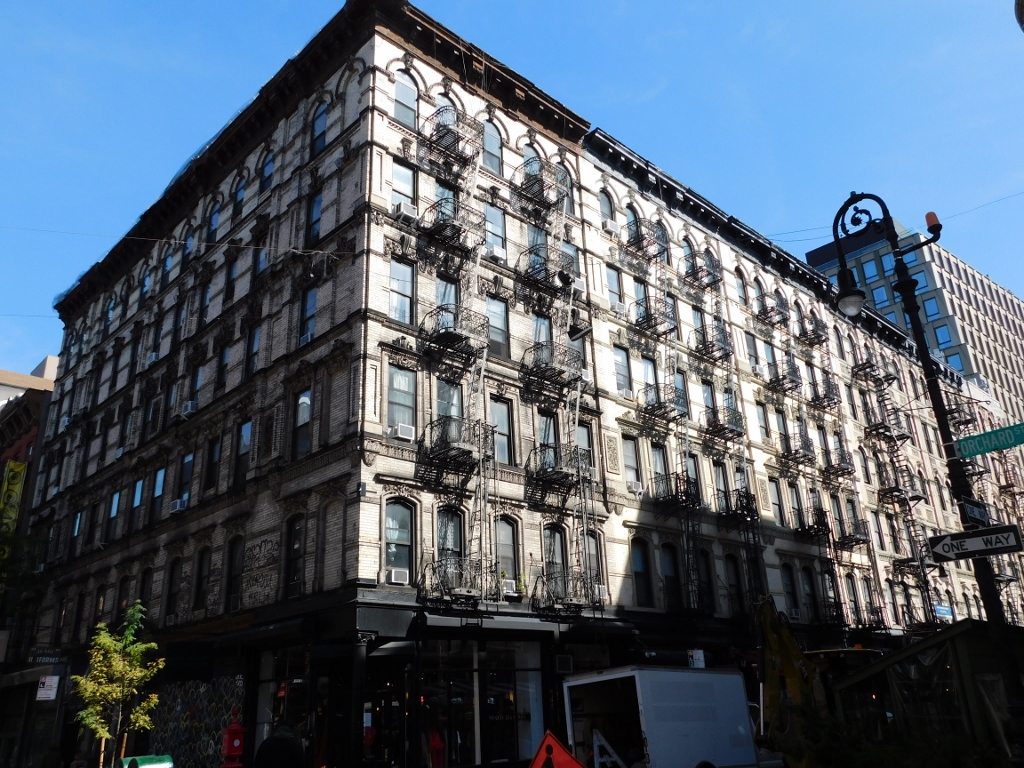 Orchard Street, a detail
Orchard Street, a detail
As I was taking the photo above, I noticed a pair of sneakers hanging on a wire. Here is another one showing this detail a little better:
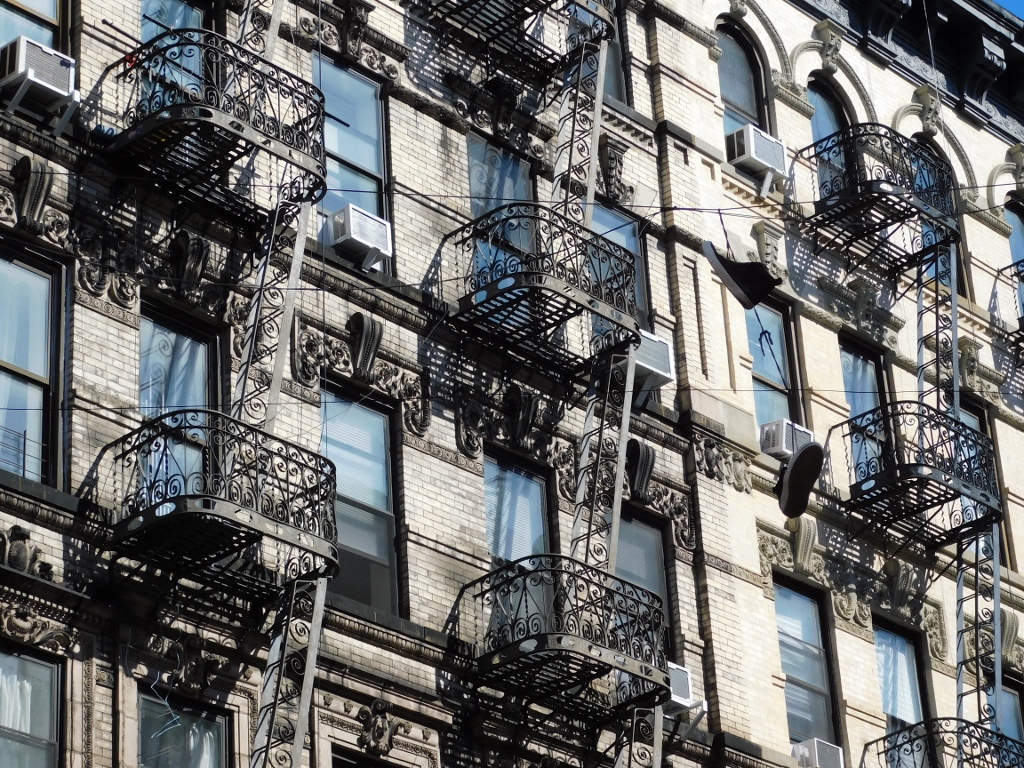 Orchard Street, a detail
Orchard Street, a detail
Although it was not a Sunday and thus the street may have looked quite ordinary, I was not the only one to come here for some sightseeing. This was done much more seriously by a group seen in the photo below.
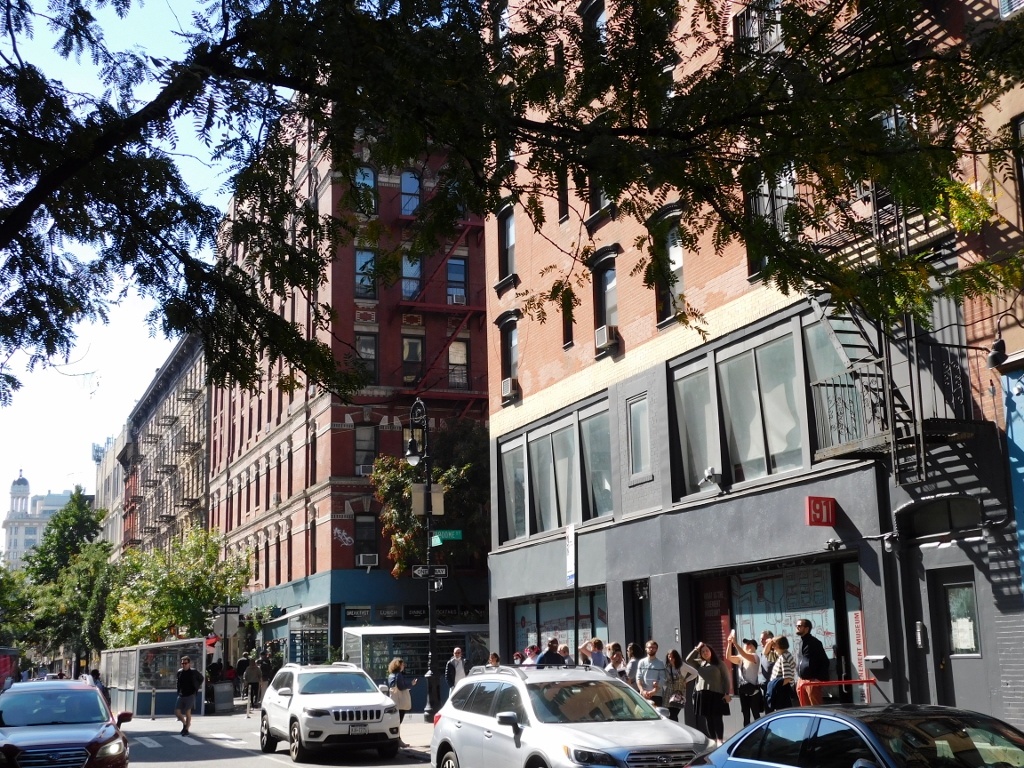 Orchard Street
Orchard Street
Soon I also reached a crossroad with a big and important street called Delancey and named like that after a judge and governor from the 18th century who was the father of the owner of the orchard located in the area of the present-day Orchard Street. Here is a symbolic photo referencing this.
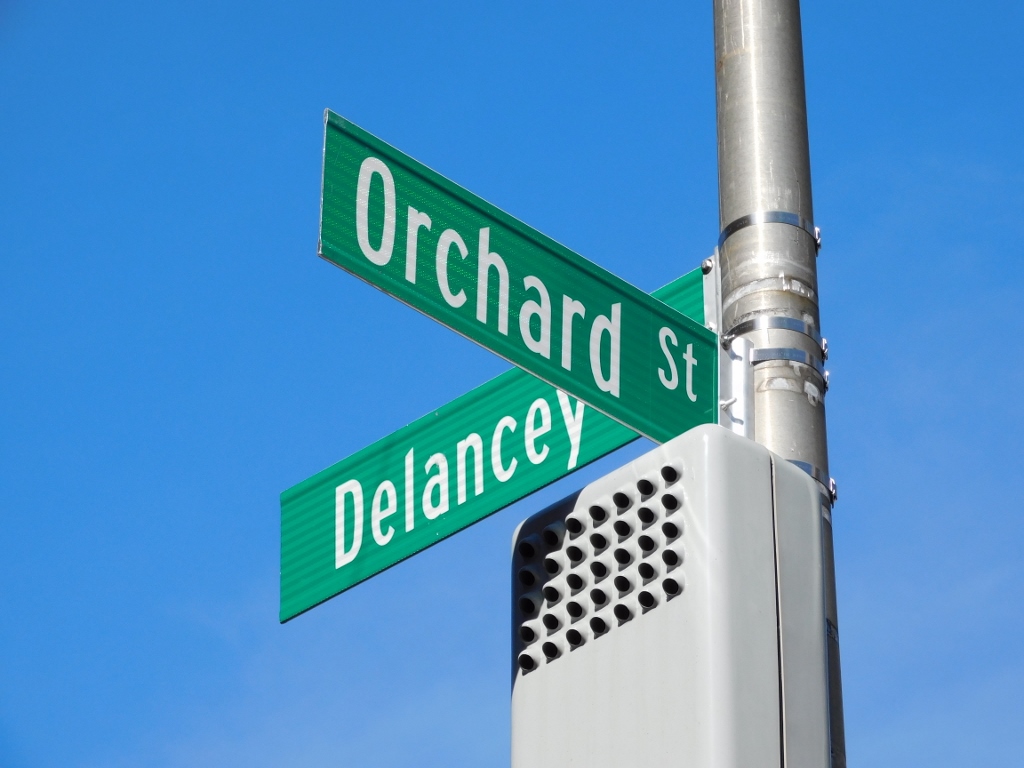 Historic symbolism
Historic symbolism
Delancey Street is one of the more important streets in Lower Manhattan, among other reasons because with its eastern section it leads directly towards another bridge to Brooklyn – the Williamsburg Bridge.
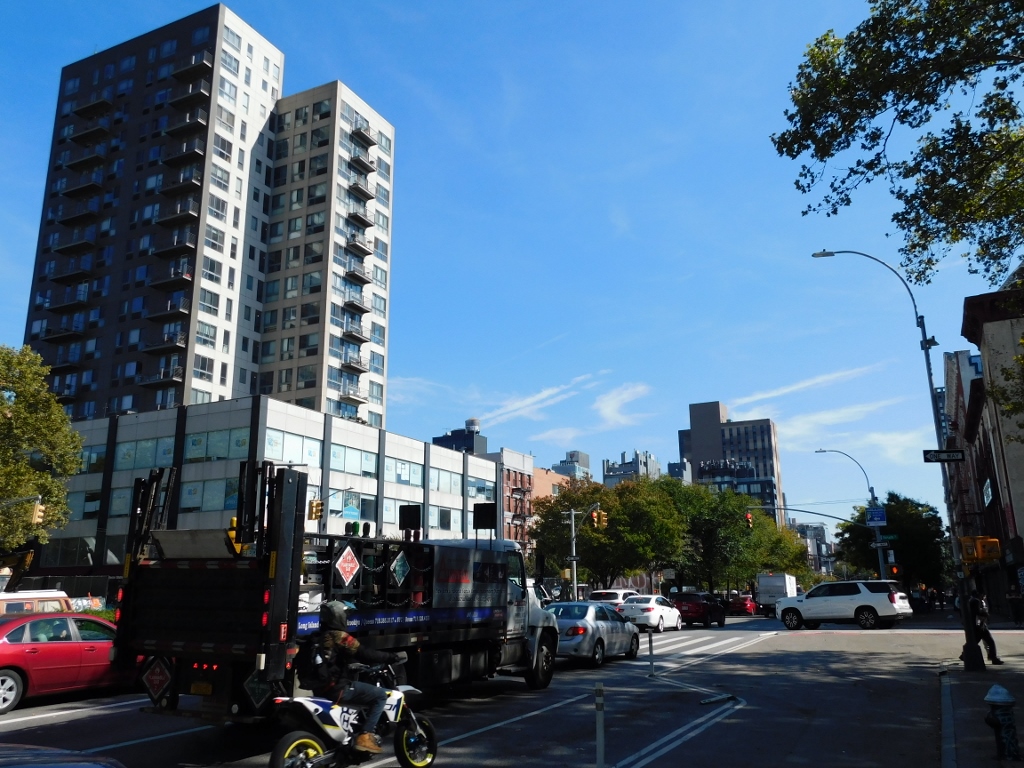 Delancey Street
Delancey Street
Now I started to head back westwards and towards another important and famous neighbourhood and so I reached a crossroad with the Bowery [street]. This is a very nice place for taking photos. By the way, a little farther northwards, the Bowery turns into the 3rd and the 4th Avenues.
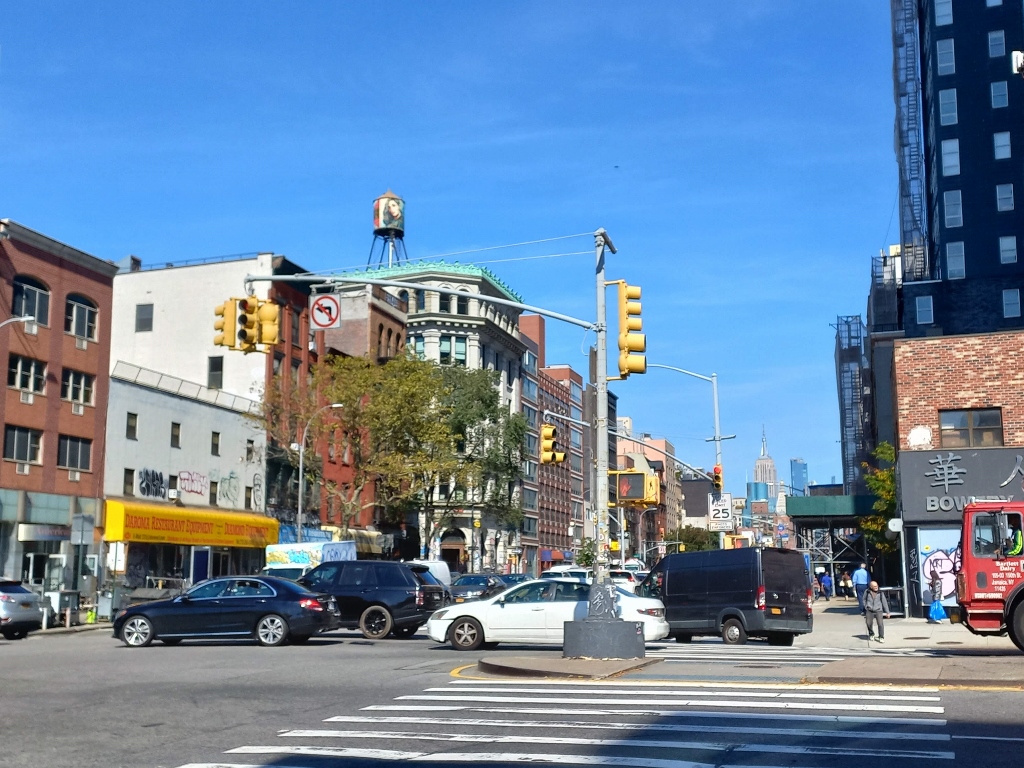 Delancey Street and the Bowery crossroad
Delancey Street and the Bowery crossroad
I particularly liked some details.
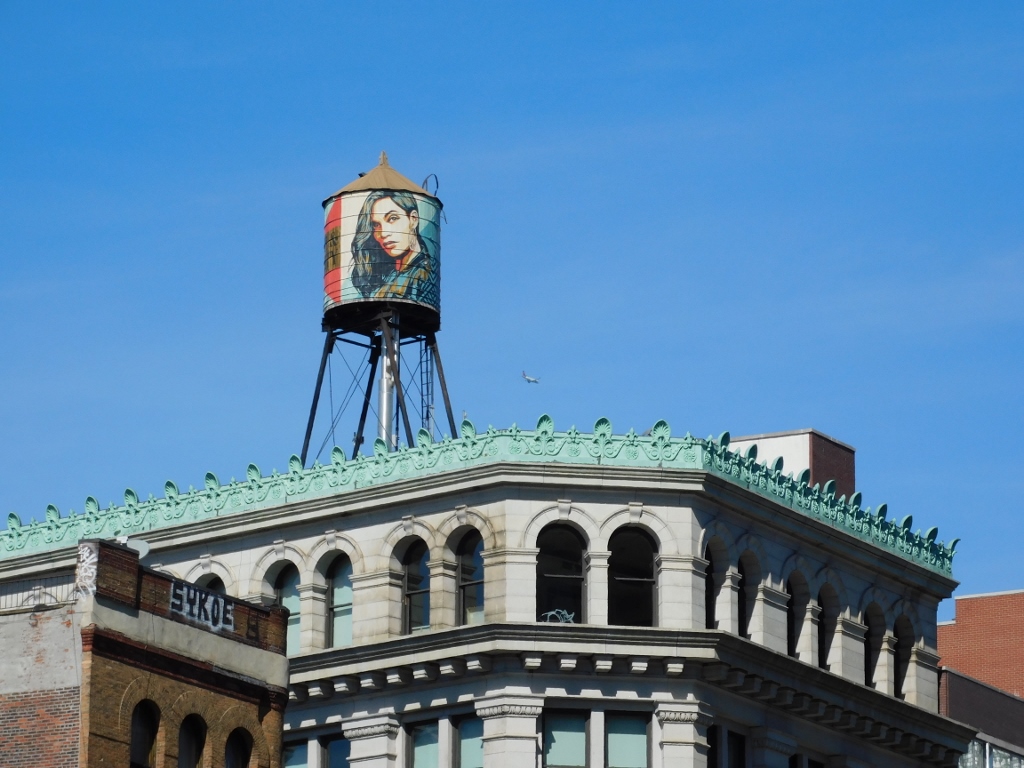 The Bowery, a detail
The Bowery, a detail
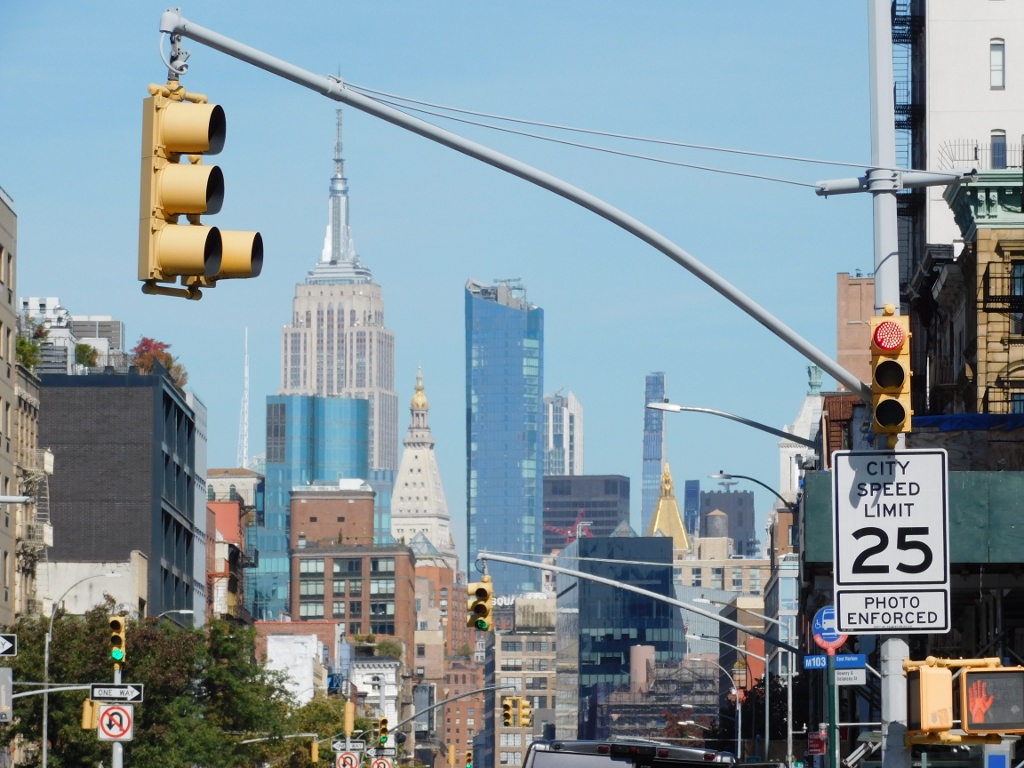 The Bowery, a detail
The Bowery, a detail
Here I came across a small restaurant that offered dumplings. I like this type of food very much, so I was inspired right away to eat something. I did not take a big portion, because it was still too early for my lunch, so this was a type of a late morning snack.
 Light snack
Light snack
By the way, it is the Bowery that makes the east border of this other famous neighbourhood which is Little Italy. So, over time, almost the entire Lower Manhattan got spontaneously divided into enclaves with concentrations of immigrants of a certain ethnic origin. Just like the Chinatown was the place that was naturally attractive to the immigrants of Chinese/Asian origin, the adjacent neighbourhood, Little Italy, was the part of the city that was mostly populated by Italians.
In the popular culture, this neighbourhood is interesting because this was the place from which the American development of the fictitious Corleone family from the book and film “The Godfather” started and although in real life mafia certainly functioned here, today this is primarily a tourist destination and one of the main streets is Mulberry Street. Bearing in mind the meaning of the word “mulberry,” I can only think of mulberry trees growing here on the properties of the early settlers. There are no mulberry trees today, but there are many restaurants, not only in this street, but throughout the neighbourhood.
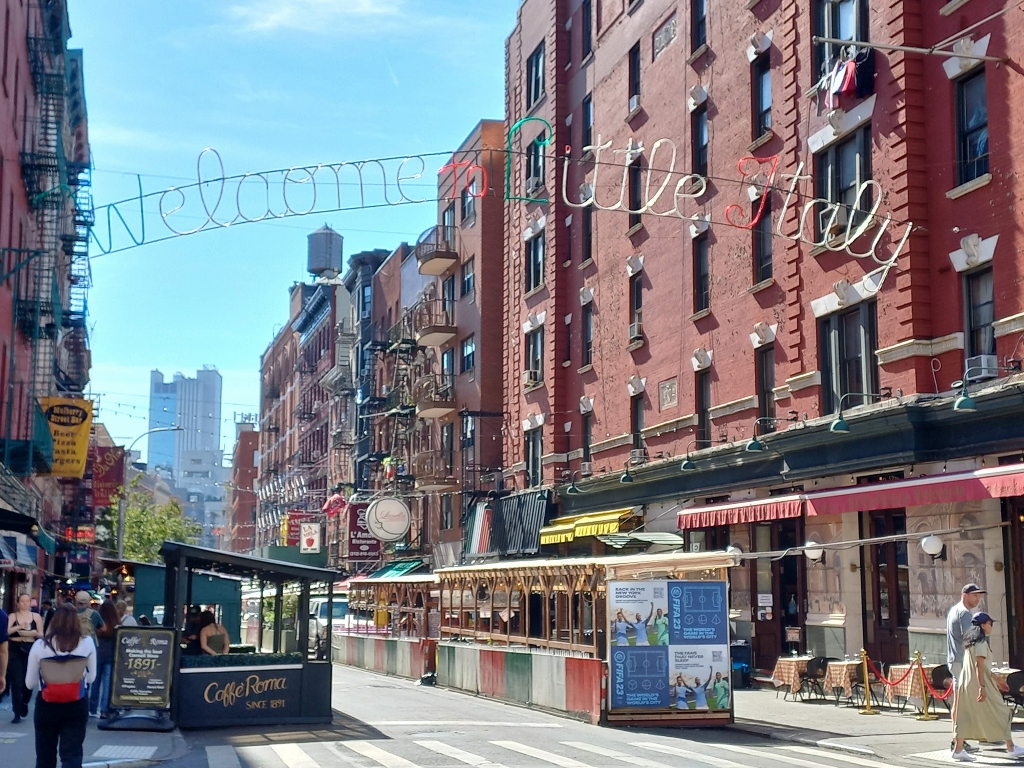 Little Italy
Little Italy
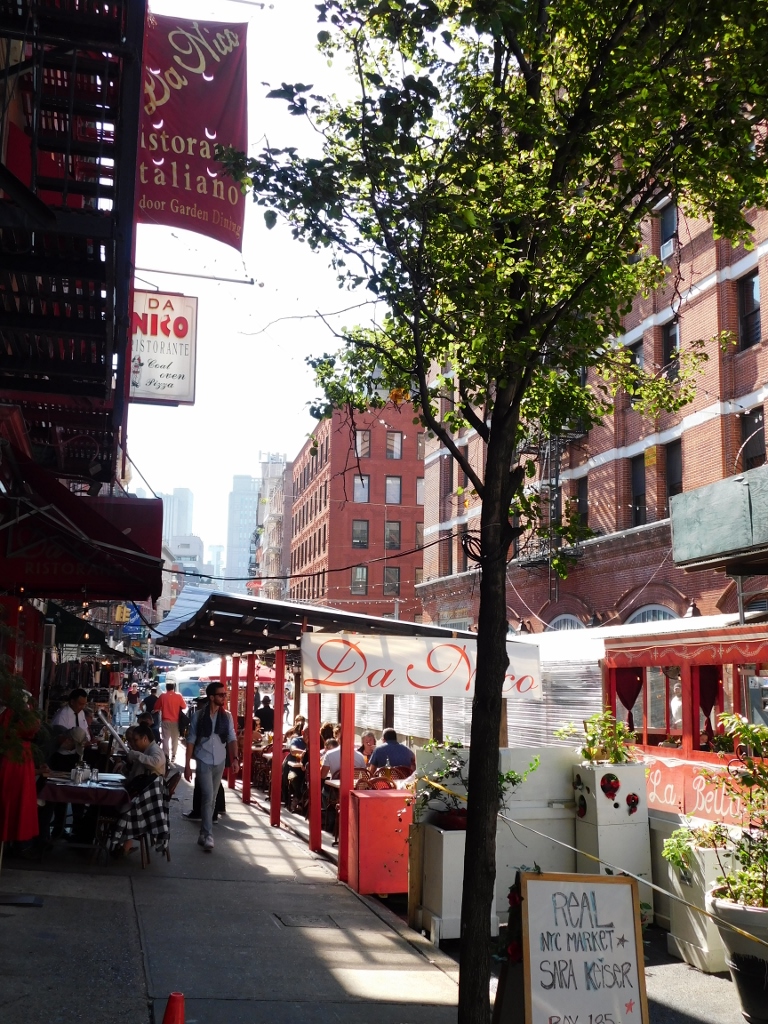 Little Italy
Little Italy
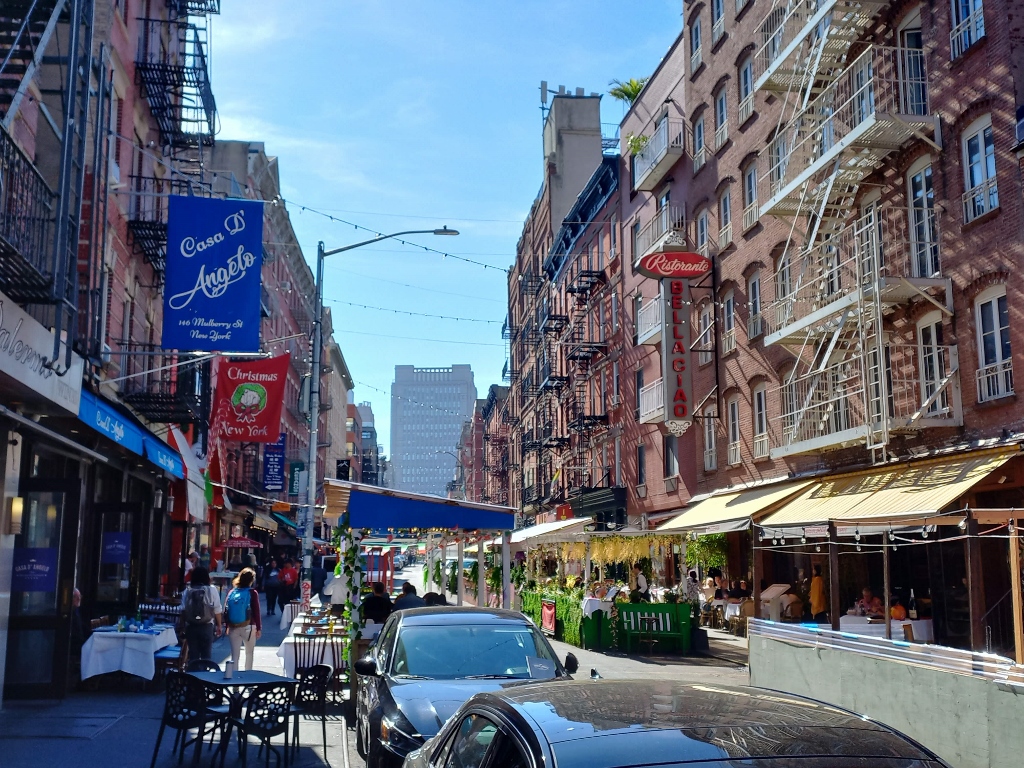 Little Italy
Little Italy
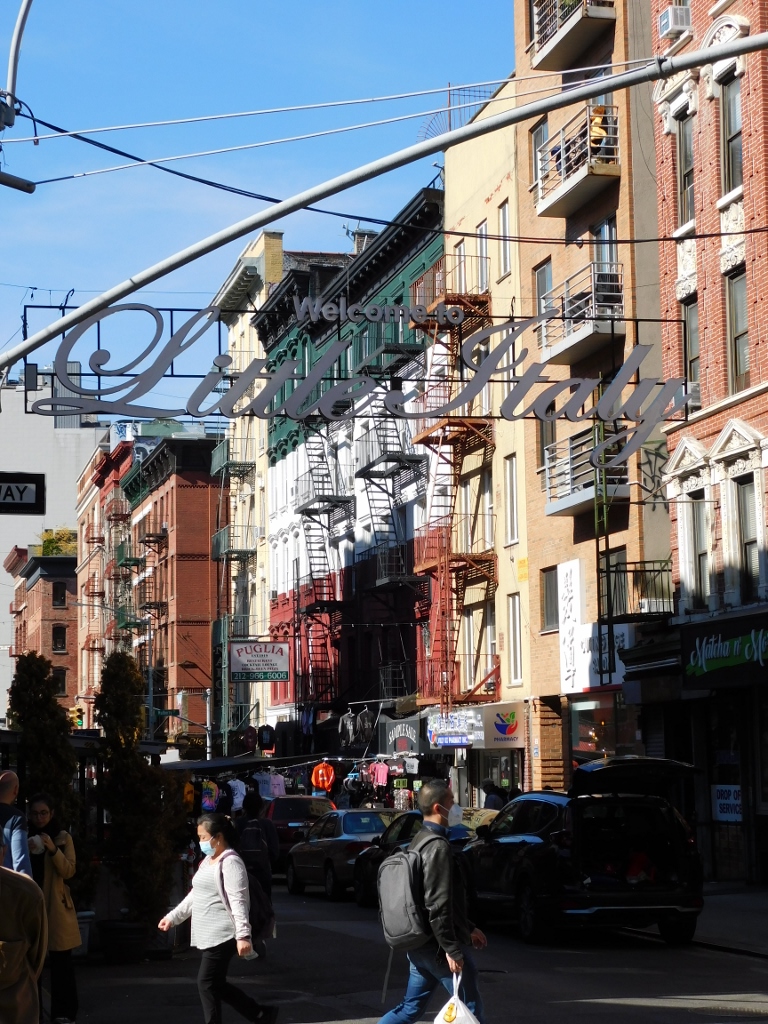 Little Italy
Little Italy
The emphasis is, of course, on the Italian cuisine and what kind of Italian cuisine would it be without – cannoli.
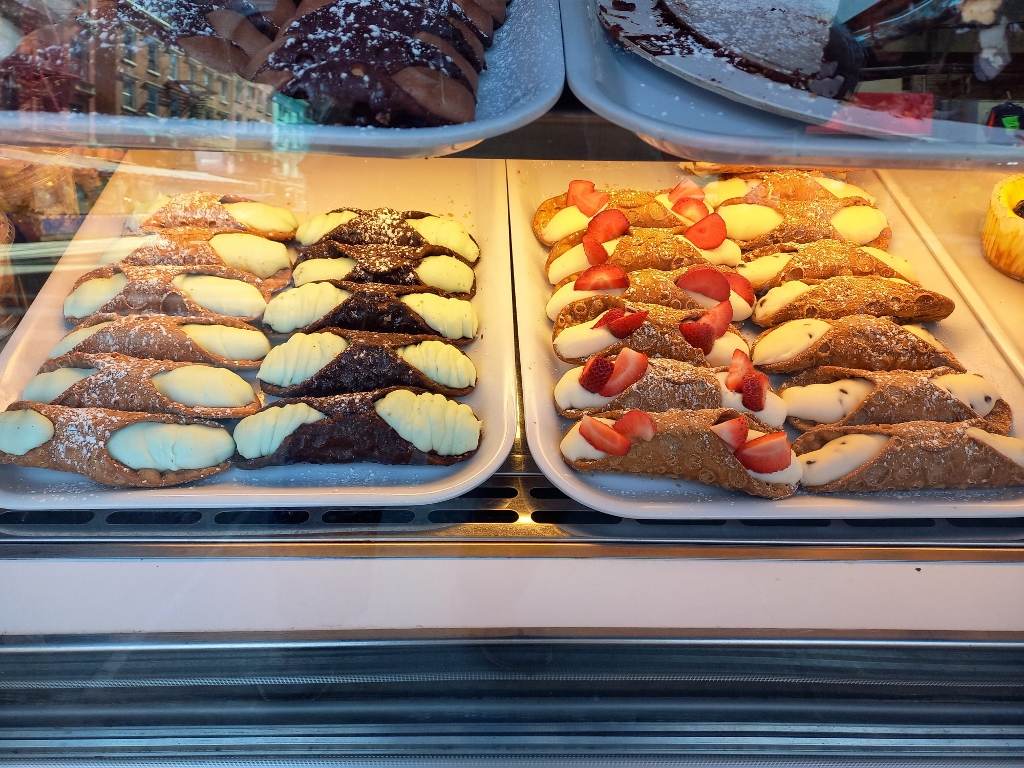 Cannoli in Little Italy
Cannoli in Little Italy
The next neighbourhood I walked to, which is right next to Little Italy, was Soho.
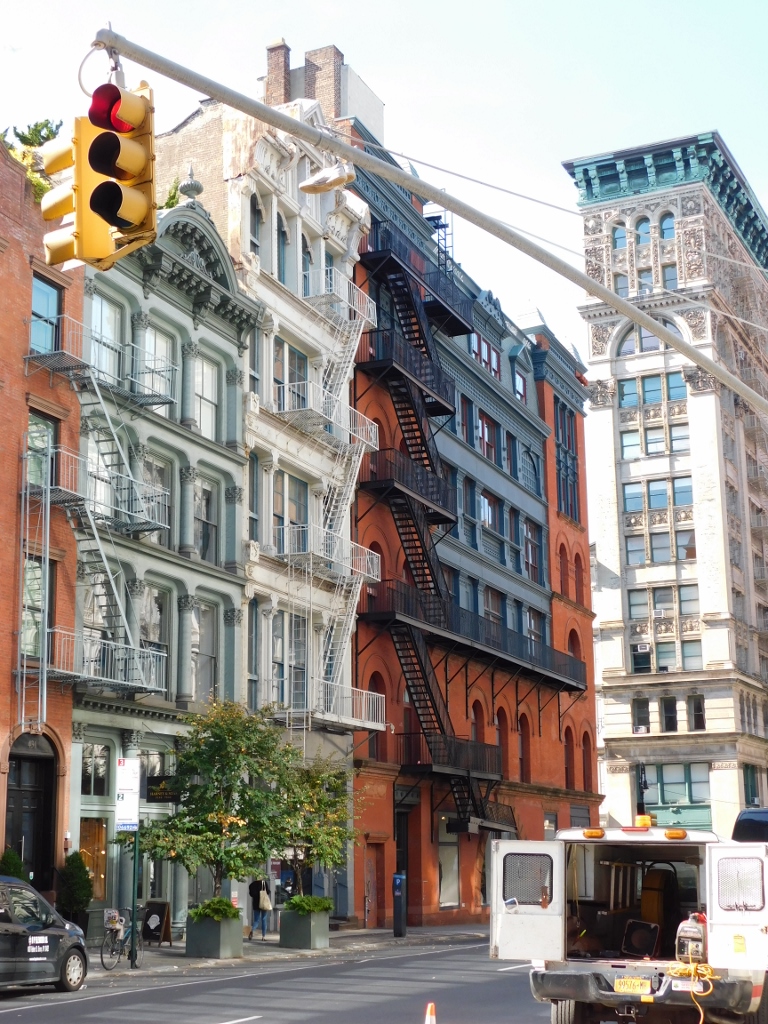 New York’s Soho
New York’s Soho
This neighbourhood is historically renowned because it was here that the first free community of Afro-Americans on the island was founded. Later, during the 19th century, there were numerous warehouses built using cast iron and many of these buildings, that have changed their purpose in the meantime, can be seen even today. From the 1970s onwards, Soho became famous for its numerous art galleries, as well as the meeting point of artists who used to rent premises for their studios here. Today, you can see a large number of stores, primarily of clothes – from those very expensive to those that are not that expensive.
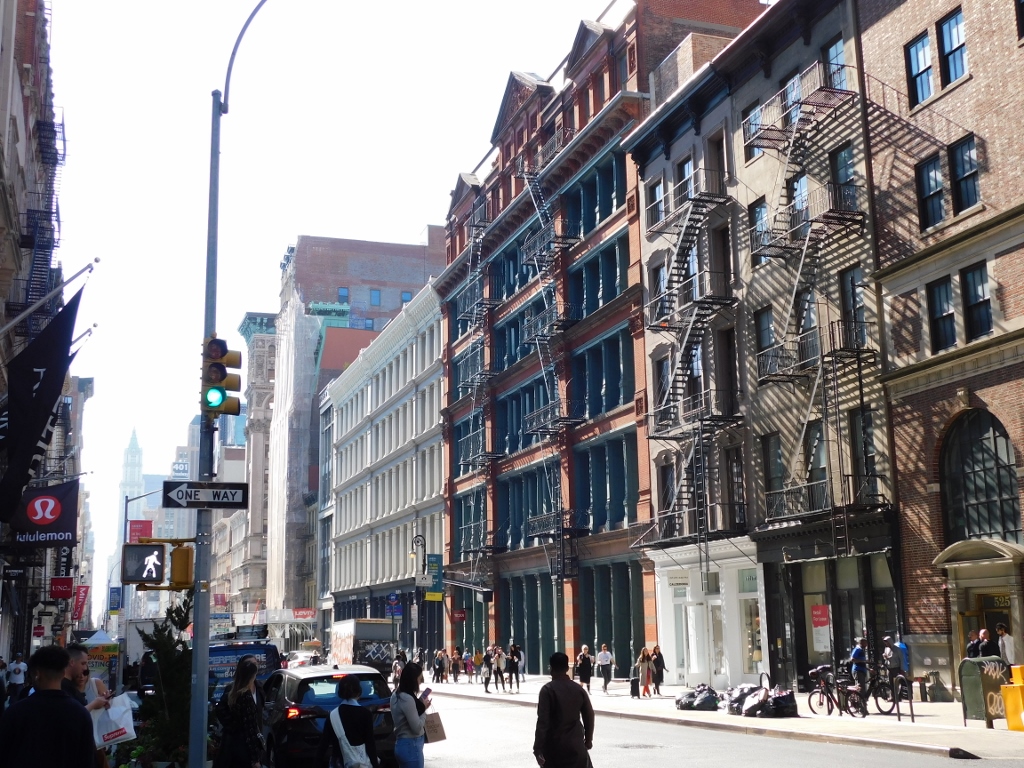 New York’s Soho
New York’s Soho
By the way, as for the name itself, it needs to be said that Soho in New York has in fact no connection with the neighbourhood of the same name in London. As an urban area, London’s Soho started to develop back in the 16th century and it got its name in the 17th century. The name for New York’s Soho was concocted in 1962 and was conceived by a New York urban planner. The word should be actually written SoHo, capital S and capital H, because this is an abbreviation from “South of Houston Street” since the area of SoHo extends precisely south of that street. Also, although the first “o” in Houston Street is unexpectedly pronounced as “a”, the abbreviated name of the neighbourhood uses the first two letters from the name of the street as they are written. The fact that the neighbourhoods in London and New York share the same name only made the whole thing more interesting.
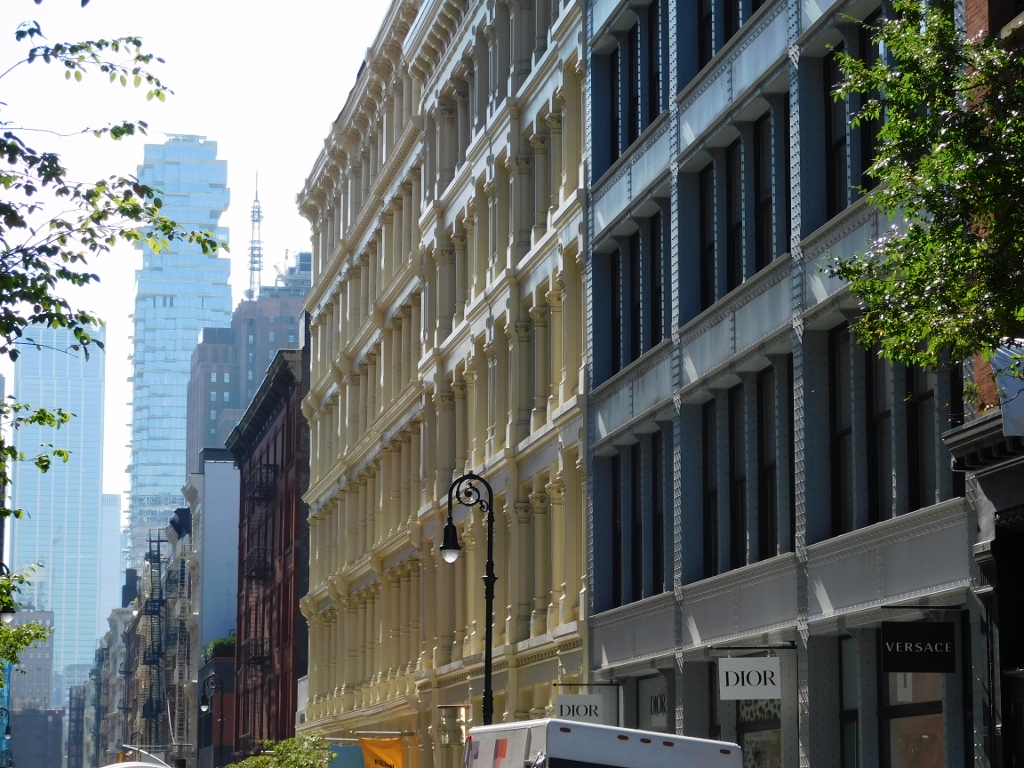 New York’s Soho
New York’s Soho
Just as I did in the neighbourhoods I had previously visited, here too I only walked along the streets without getting into any details, but from time to time I enjoyed the view I had from here at the central part of Manhattan.
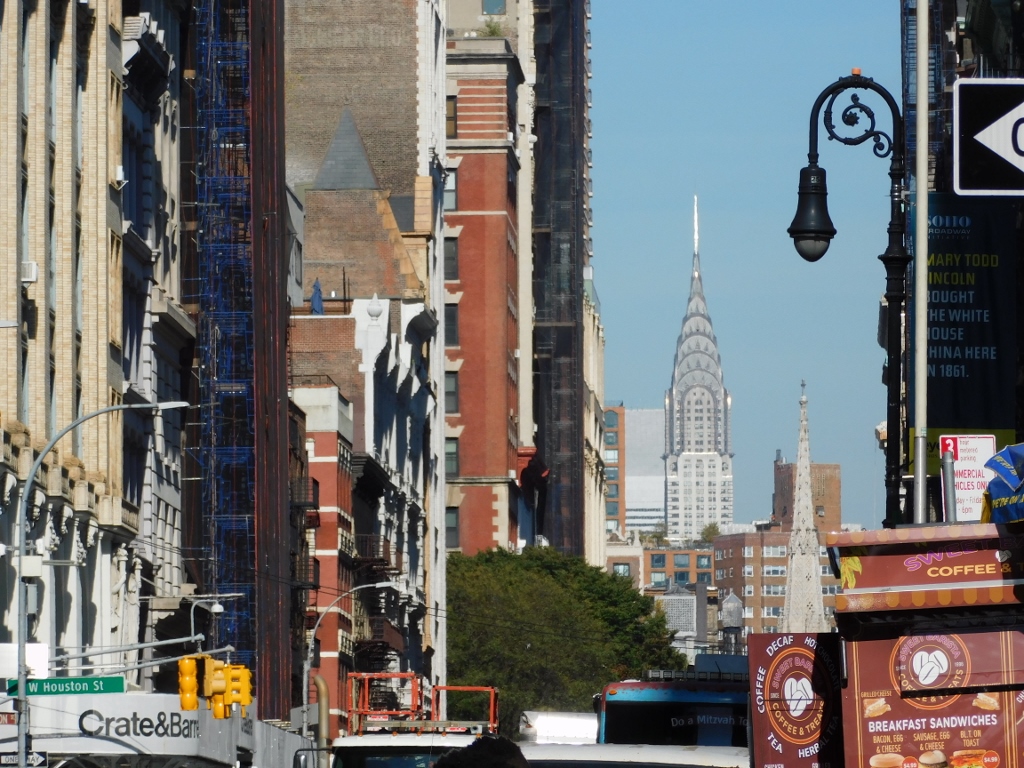 View from Soho in New York
View from Soho in New York
In the photos above, you can mostly see big buildings, because in this section I walked along the Broadway which, with its length of around 53 km, is one of the longest streets in the world. But, there is plenty of smaller, local streets in Soho, with various interesting details.
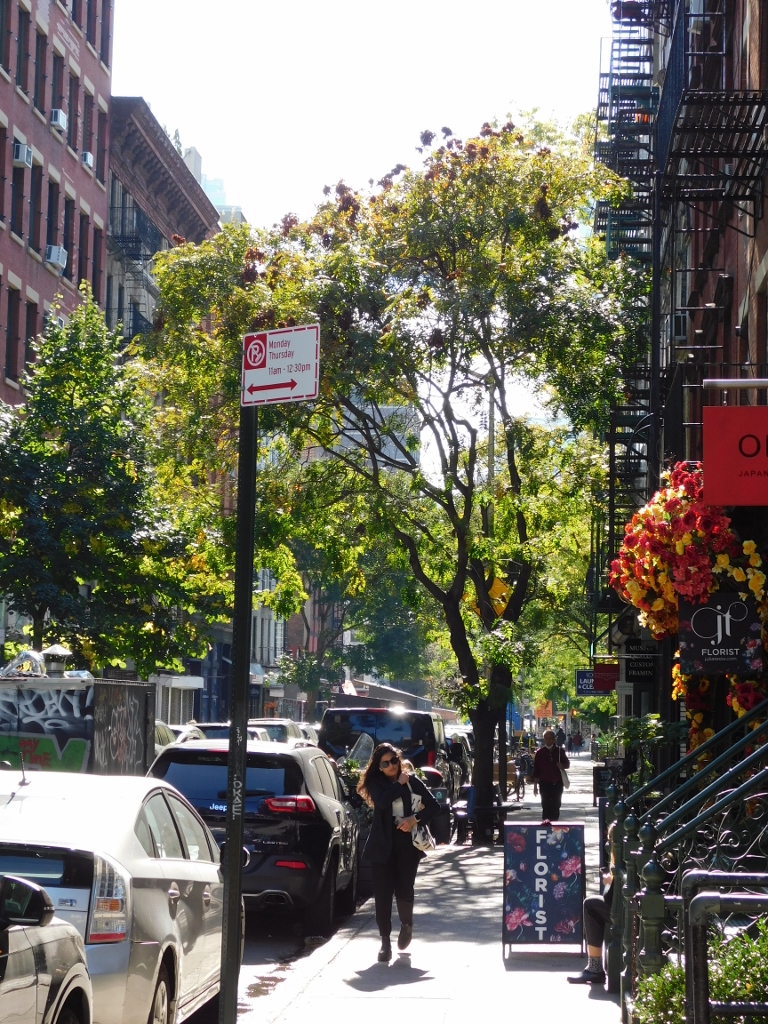 New York’s Soho
New York’s Soho
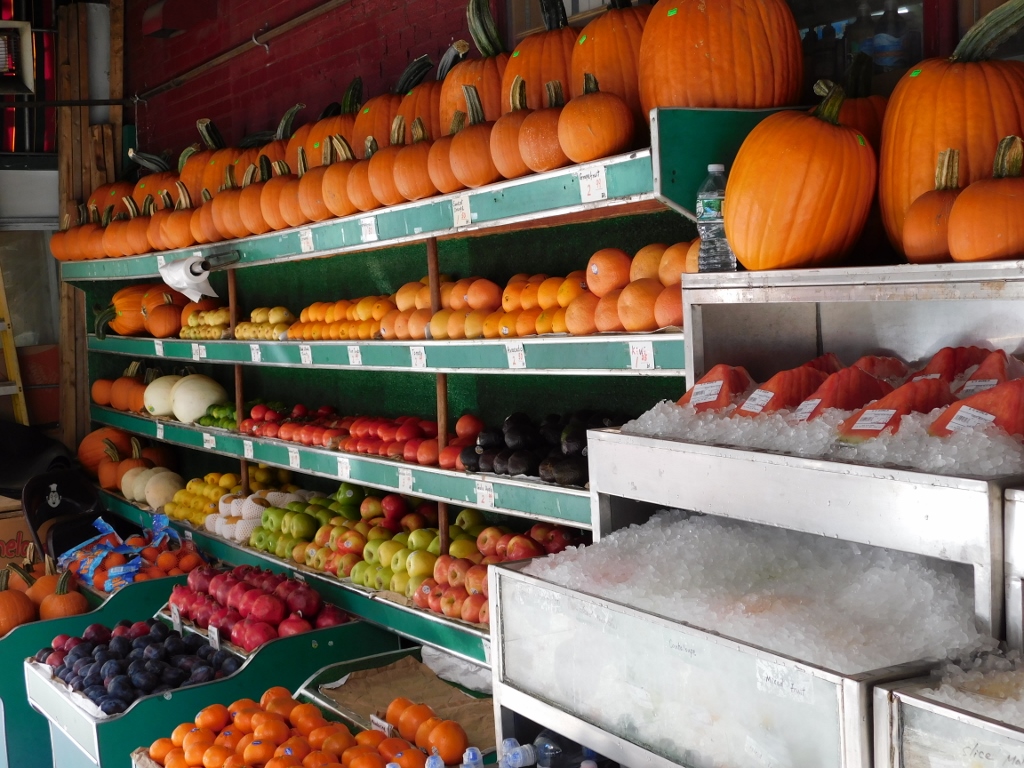 Autumn in Soho in New York
Autumn in Soho in New York
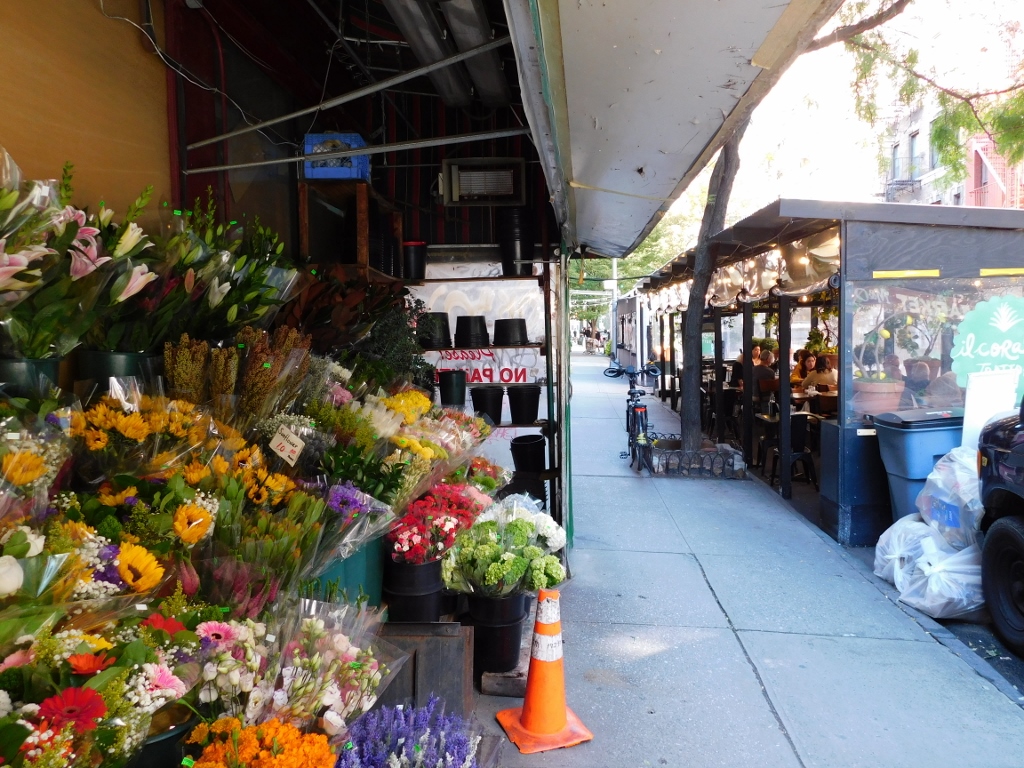 New York’s Soho
New York’s Soho
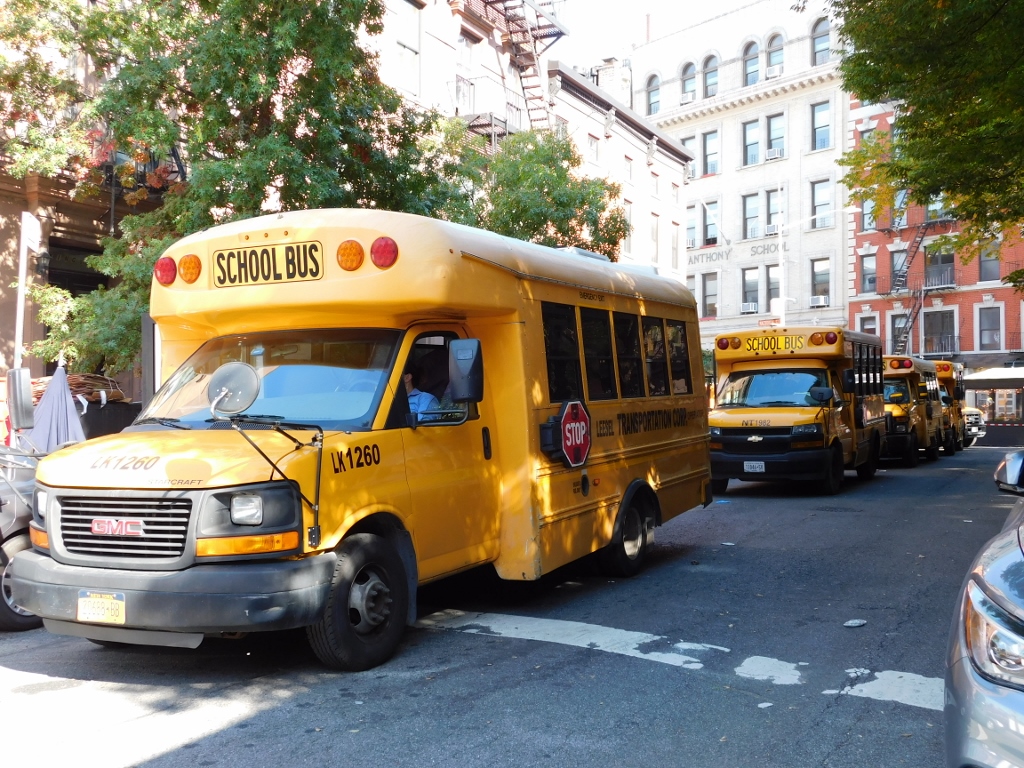 School buses waiting for the children to finish with the school for the day to take them back home
School buses waiting for the children to finish with the school for the day to take them back home
Now I reached the crossroad of Houston Street and the 6th Avenue because another famous neighbourhood of New York, Greenwich Village, starts here.
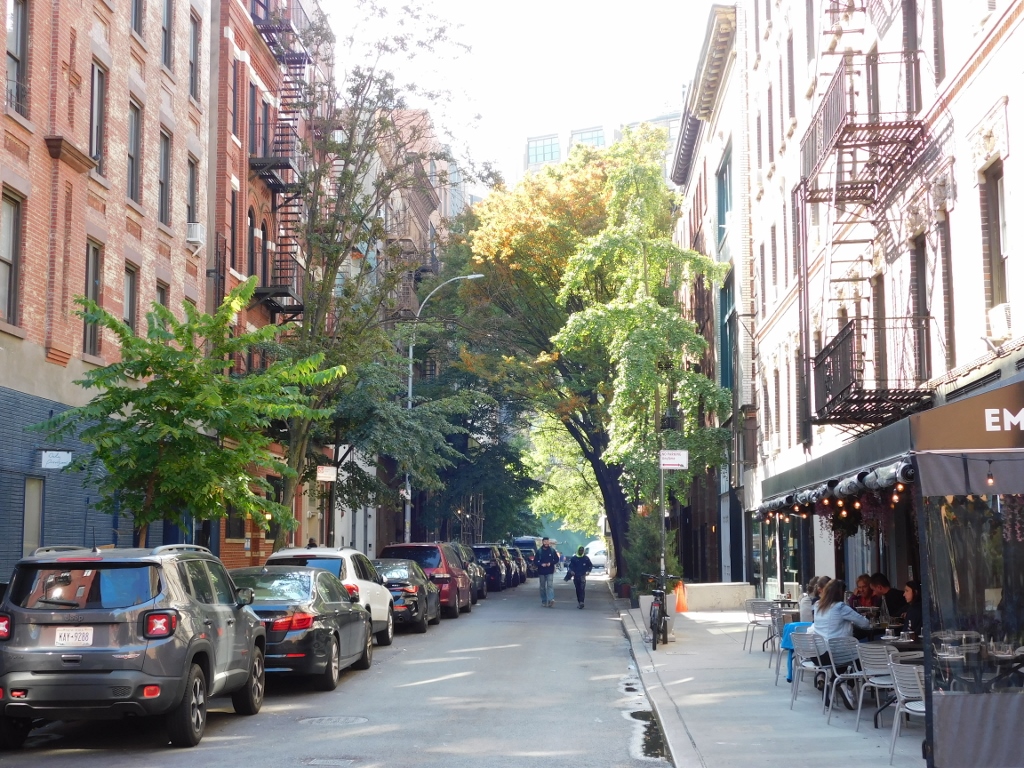 Greenwich Village
Greenwich Village
This is mostly a residential neighbourhood, but very renowned as the historic haven of artists and bohemians, as well as the cradle of various modern movements. Even today, this is a very popular neighbourhood and some of its parts, such as the Meatpacking District , became at the beginning of the 21st century the most fashionable parts of the city. Greenwich Village is also where The Whitney, famous museum, two private New York colleges, a large park, as well as various boutiques and popular and modern brand stores are. In other words, once very quiet, the local character of this neighbourhood has turned significantly towards commercialisation.
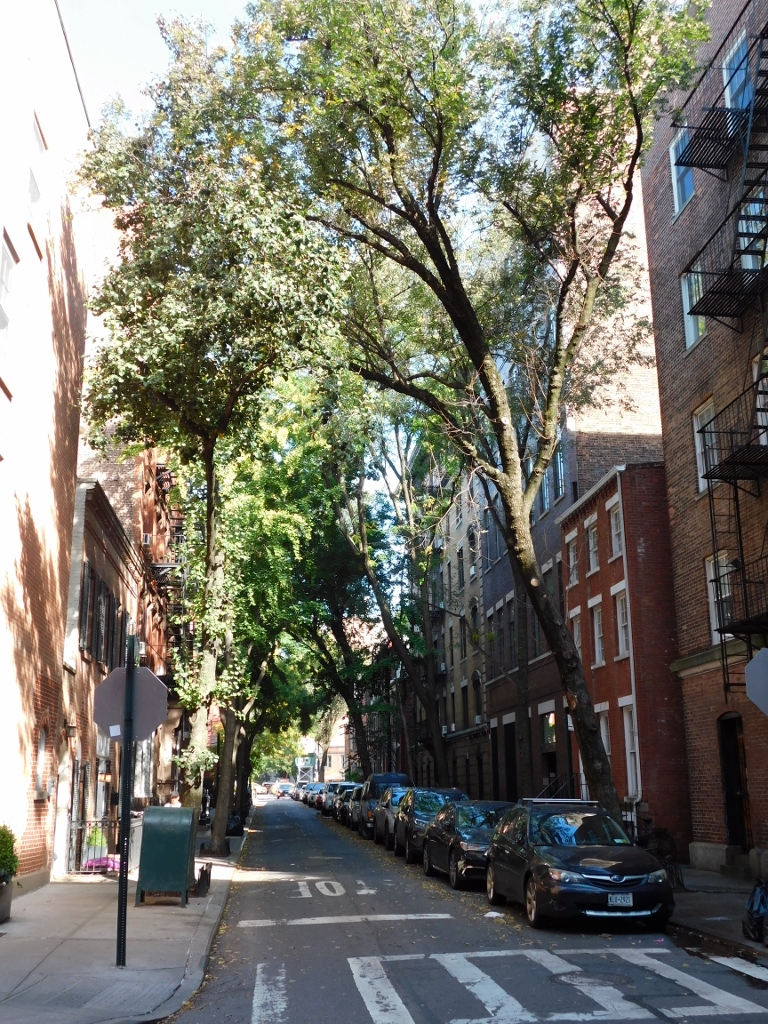 Greenwich Village
Greenwich Village
All of this has influenced the use of some of the local buildings in different TV series some of which are amongst the most popular in the world. For instance, the building in which Carrie Bradshaw from “The Sex and the City” “lived” is actually located in Greenwich Village, but I didn’t have the time to visit everything that may be interesting and that can be seen in this neighbourhood. I went only to one place of interest – the building in which the friends, from “Friends” TV series, “lived.”
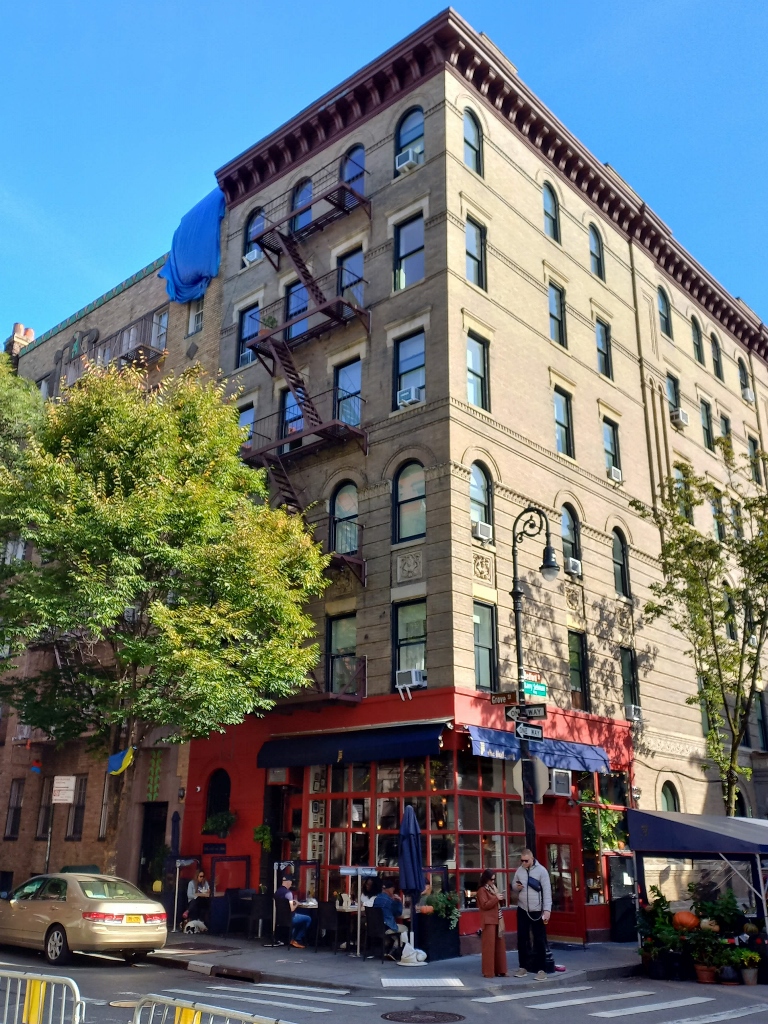 Greenwich Village
Greenwich Village
Since my sightseeing plan for the day entailed the return towards the east parts of New York that are some 2.5 km away from where I currently was, I decided first to make a nice coffee break in a nearby café. Needless to say, it was not the one from the TV series, but the coffee was quite good.
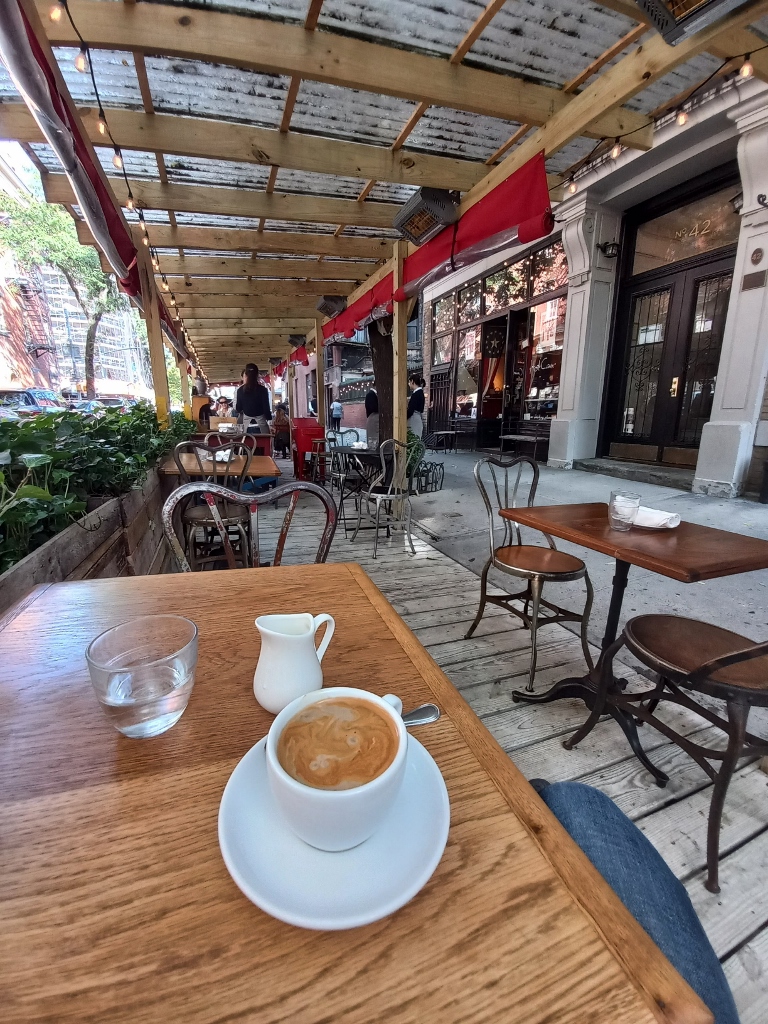 Coffee in Greenwich Village
Coffee in Greenwich Village
And after the pleasant break, I continued with my stroll along the pretty, picturesque streets until I reached the spacious Washington Square Park.
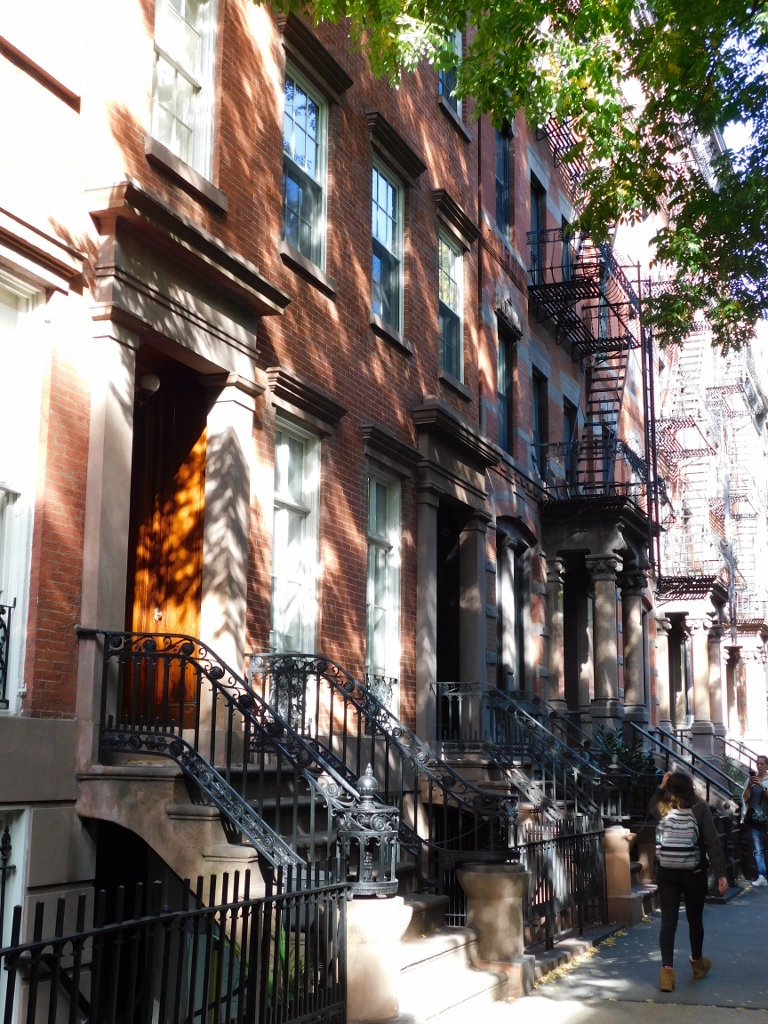 Greenwich Village
Greenwich Village
 Greenwich Village
Greenwich Village
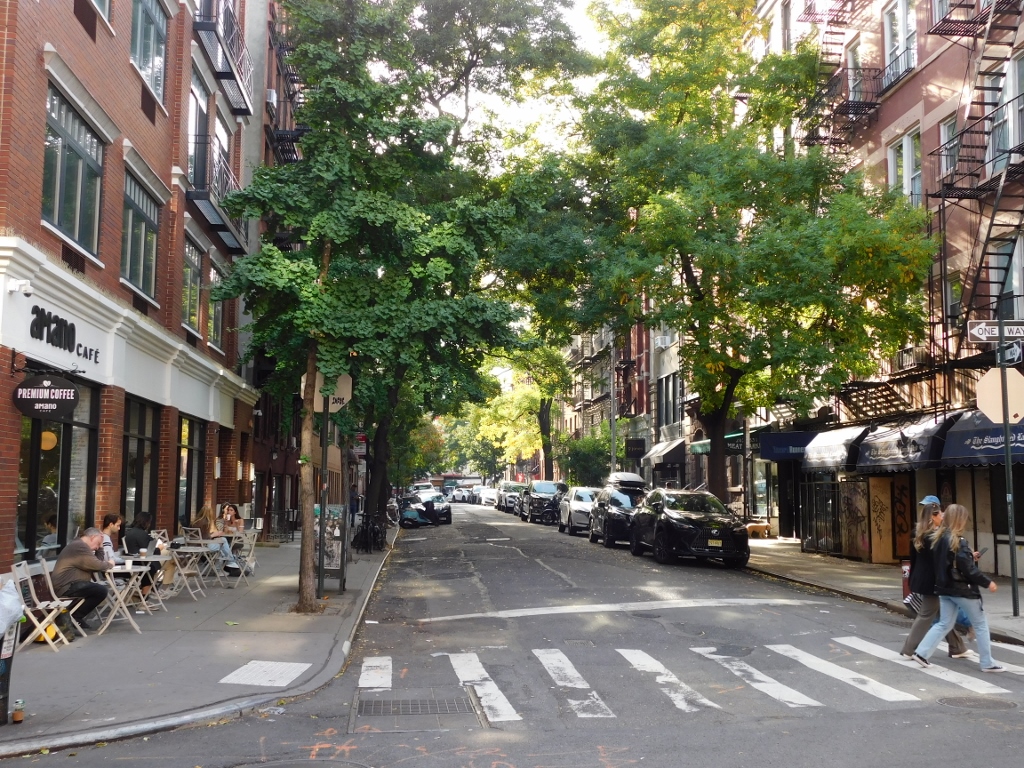 Greenwich Village
Greenwich Village
 Washington Square Park
Washington Square Park
The public Washington Square Park is an urban green oasis with the surface area of 4 hectares located within Greenwich Village.
 Washington Square Park
Washington Square Park
 Washington Square Park
Washington Square Park
One of the most famous landmarks of the park is the Washington Square Arch or the Washington Arch. This memorial arch made of marble was erected in 1892 and the immediate reason was the celebration of 100 years since the inauguration of George Washington as the first president of the USA. Washington became the president in 1789 and a temporary arch was installed here in 1889, but three years later it was replaced with the one that can be seen today.
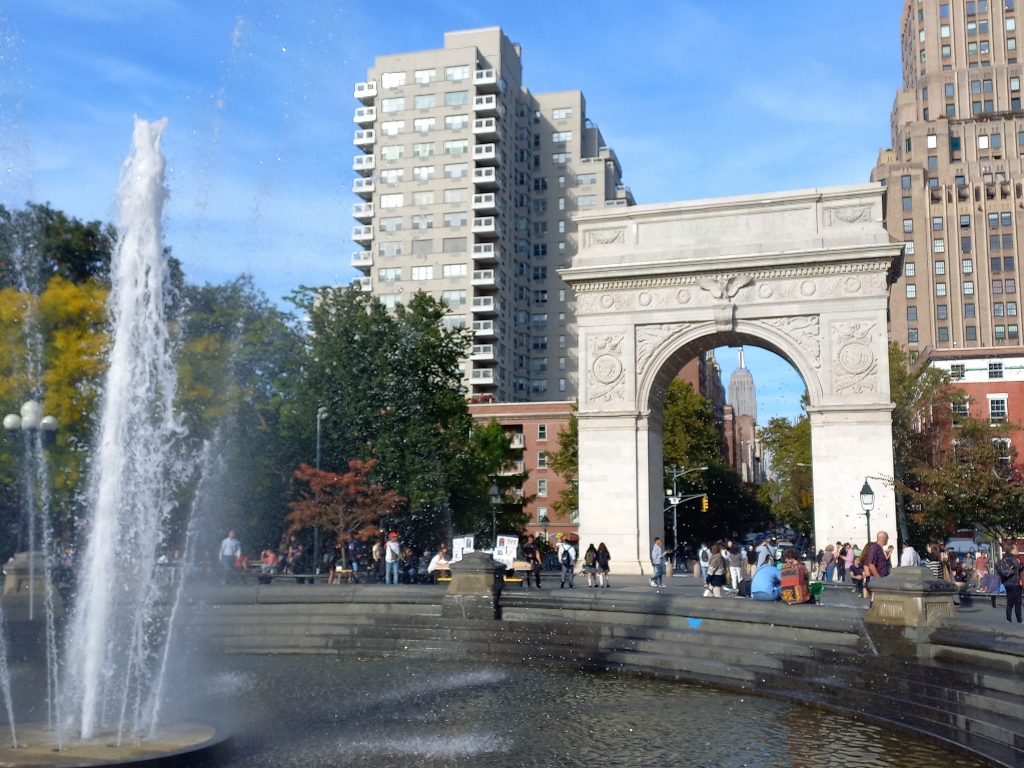 Washington Arch
Washington Arch
By the way, one of the most famous streets in the city, the 5th Avenue, starts right here from the arch and runs further up to the north of the city.
The Washington Square Park is an exceptionally popular place. In addition to passers-by and visitors like me, there are also many students around, since the park is surrounded from almost all sides by buildings belonging to the private New York University, while traditionally different artists and entertainers can be seen around the park.
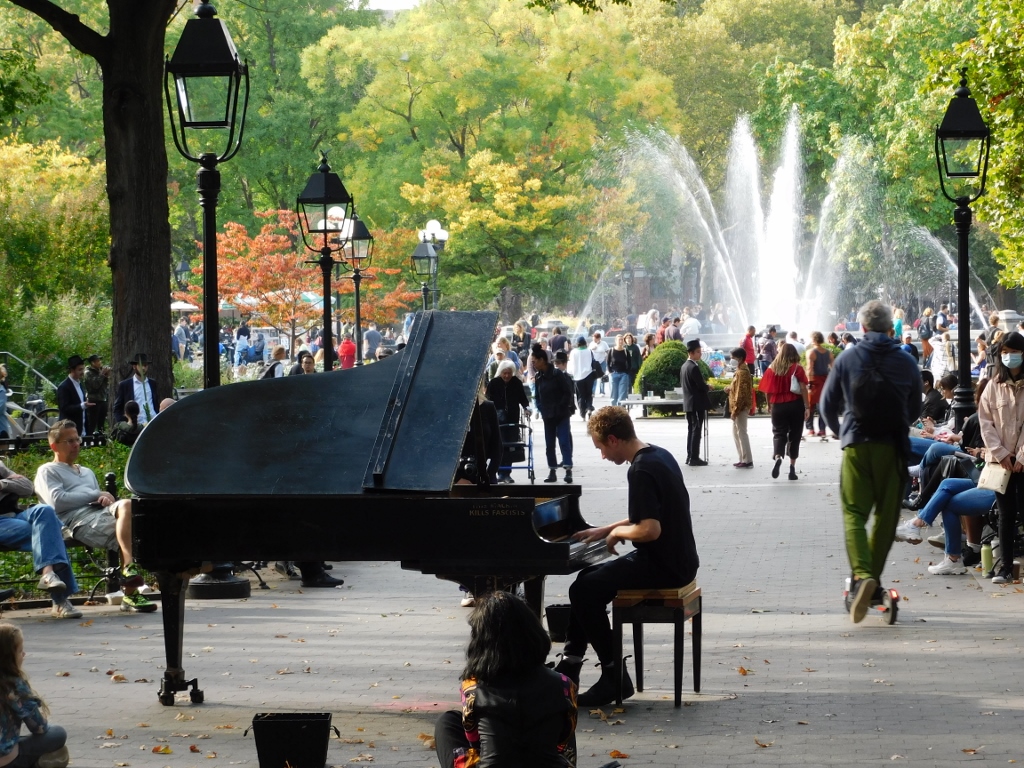 Washington Square Park
Washington Square Park
Now I walked past some buildings belonging to the university (abbreviated to NYU) and then I entered a block with a smallish park in the middle that is also owned by New York University, while absolutely looking like buildings in some of the blocks in Novi Beograd, Serbia.
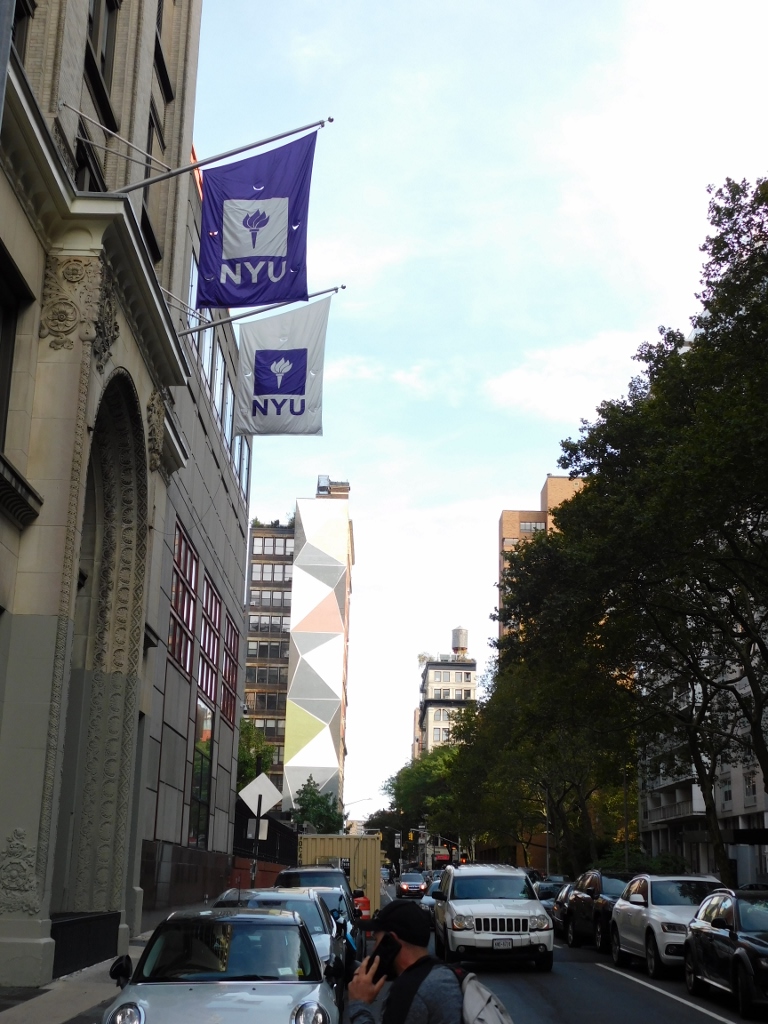 Part of New York University
Part of New York University
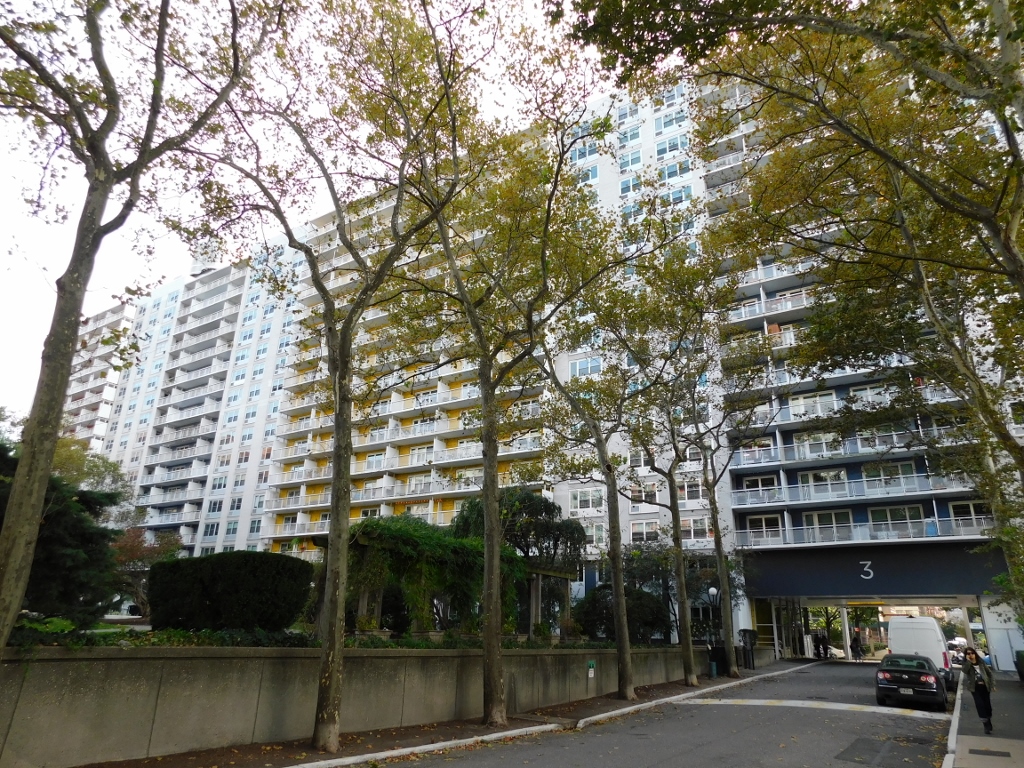 Part of New York University
Part of New York University
My goal was to go through this block and get to Bleeker Street after which I would go along it towards the east of Manhattan.
Unlike London which has Soho, New York has both SoHo and NoHo! I have already explained the origin of the name of New York’s SoHo. Just as it is an abbreviation of South of Houston Street, the name of neighbourhood NoHo was created from North of Houston Street. This is a comparatively small neighbourhood, but exceptionally popular amongst all who are “something.”
Over the last decades, some parts of New York have undergone the phase of urban gentrification. This is a rather new term and it refers to the process within which the originally cheaper parts of a city, most often inhabited by members of the working class, get turned into expensive buildings earmarked for affluent new residents or companies. Thus, NoHo has become very popular and today it is one of the most expensive and most desirable parts of Manhattan.
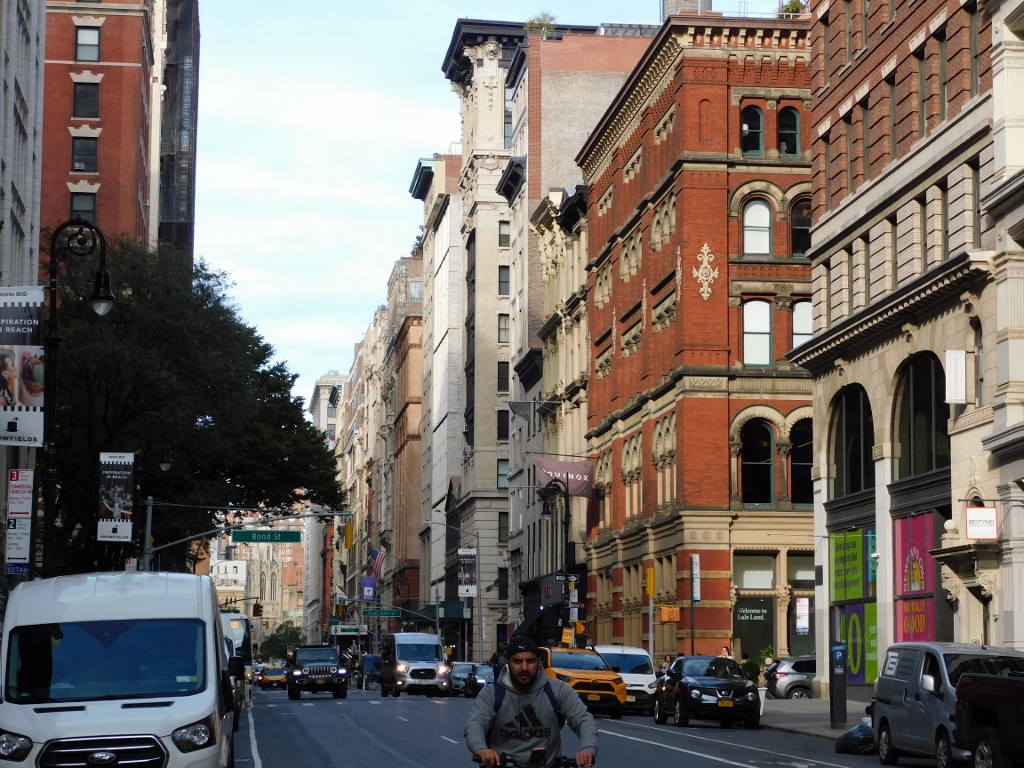 NoHo starts from the east side of Broadway
NoHo starts from the east side of Broadway
By the way, since the prices of the real estate skyrocket, the original residents have to move out and they go to the suburbs, but nobody asks them anything.
It was important for me here to continue to walk along Bleeker Street since it goes directly towards a section of the Bowery and a building where there used to be the legendary music club CBGB. The club was opened in 1973 and closed in 2006 and this was THE venue for the bands belonging to specific music genres, such as punk rock and new wave. This is the play where you could see and listen to the Ramones, Blondie, Talking Heads, Elvis Costello, the Police, etc.
The club is there no more, but it has remained in the memory and thus towards the end of Bleeker Street you can see a mural dedicated to this club and Blondie.
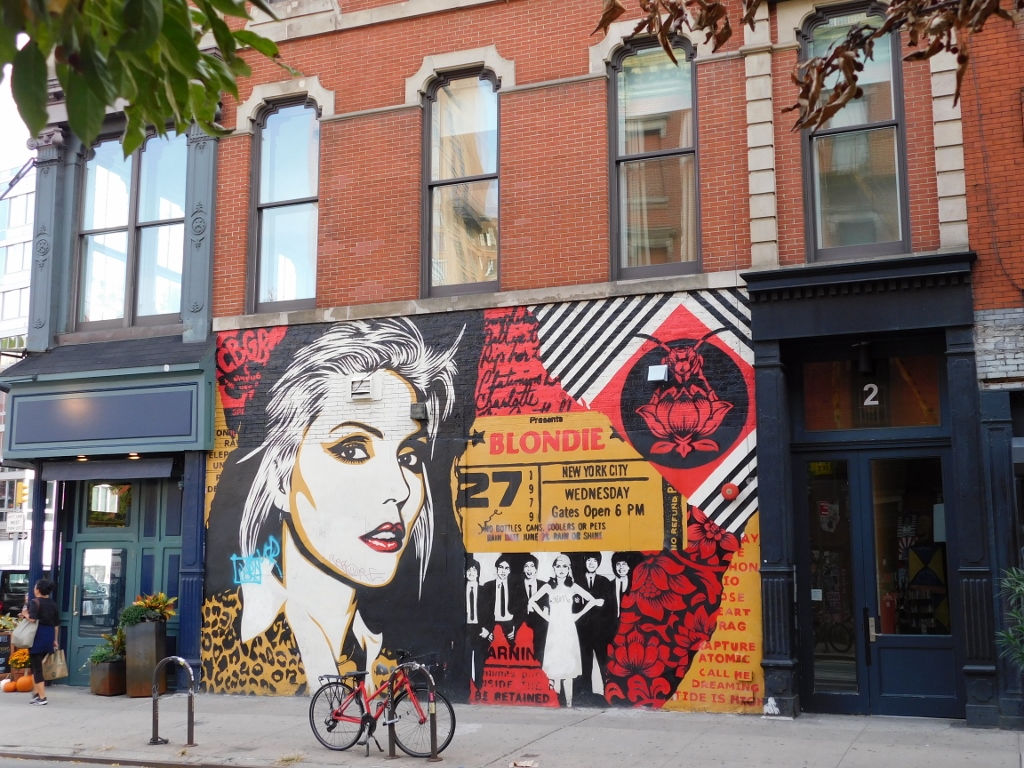 Mural that reminds people of the CBGB and Blondie
Mural that reminds people of the CBGB and Blondie
Why am I mentioning this club when it no longer exists? Well, because back in 2000, my friends Velislav and Viško brought me here one night. A friend of theirs was playing the drums in a band that had a gig at the club that night, so we came to listen for a while. It was a wild night and I mostly remember the incredible level of noise. I don’t think that ever before or after I went to a concert where the sound was so strong.
The Bowery is practically a borderline between NoHo and East Village, yet another famous part of Manhattan, and I first went along this street in the northbound direction, before venturing into the smaller streets of this neighbourhood.
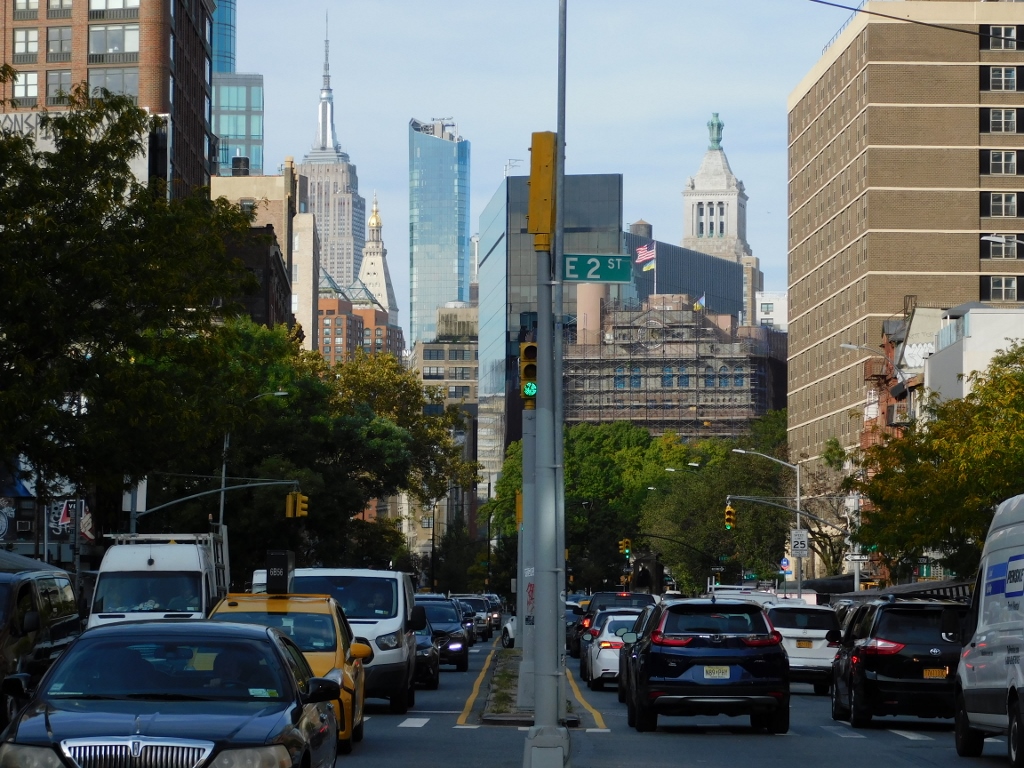 The Bowery
The Bowery
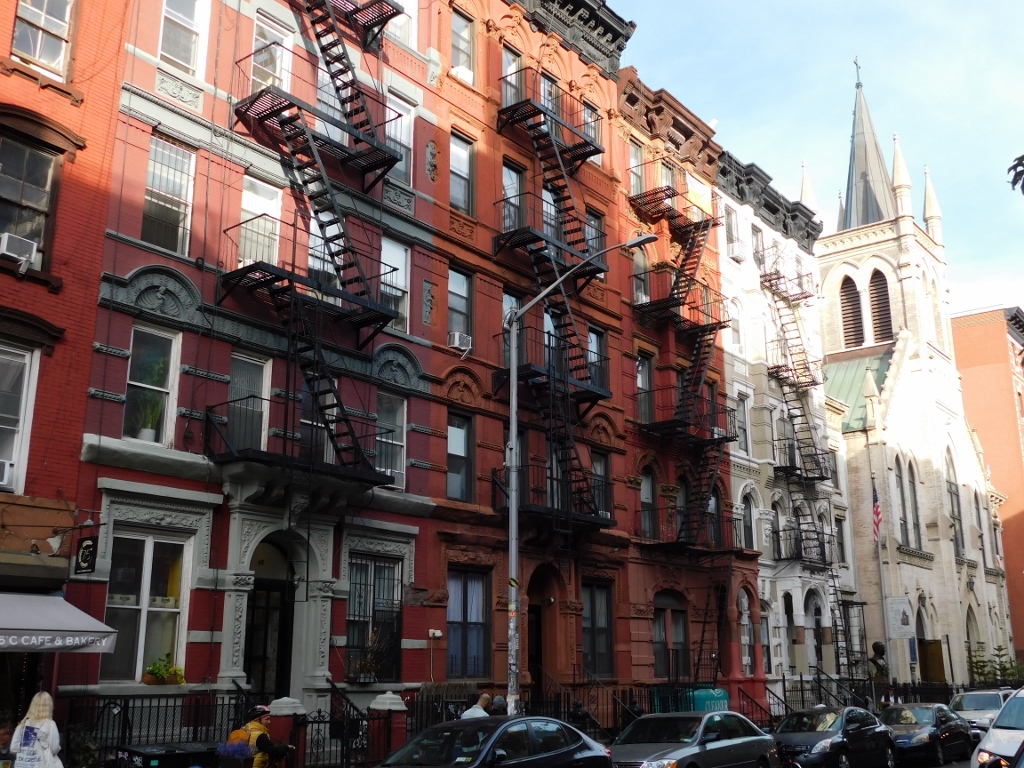 East Village
East Village
This is also a part of New York that has undergone a similar history as the neighbouring areas, i.e., until the middle of the 20th century it was mostly inhabited by immigrants, members of the working class. Then this neighbourhood became popular among writers, musicians and different other artists who liked a more peaceful rhythm of life here, as well as the significantly lower prices of renting space in this part of the city. In addition, a large number of these new residents had to move anyway from Greenwich Village, for instance, that was also popular, but that was already taken over by the urban gentrification. Therefore, different music clubs, theatres and galleries started to open here and this by itself contributed to the fact that slowly, as the time goes by, East Village also falls prey to the urban gentrification.
I only walked here, stopping from time to time in order to take a photo or two, since I was already tired by this point.
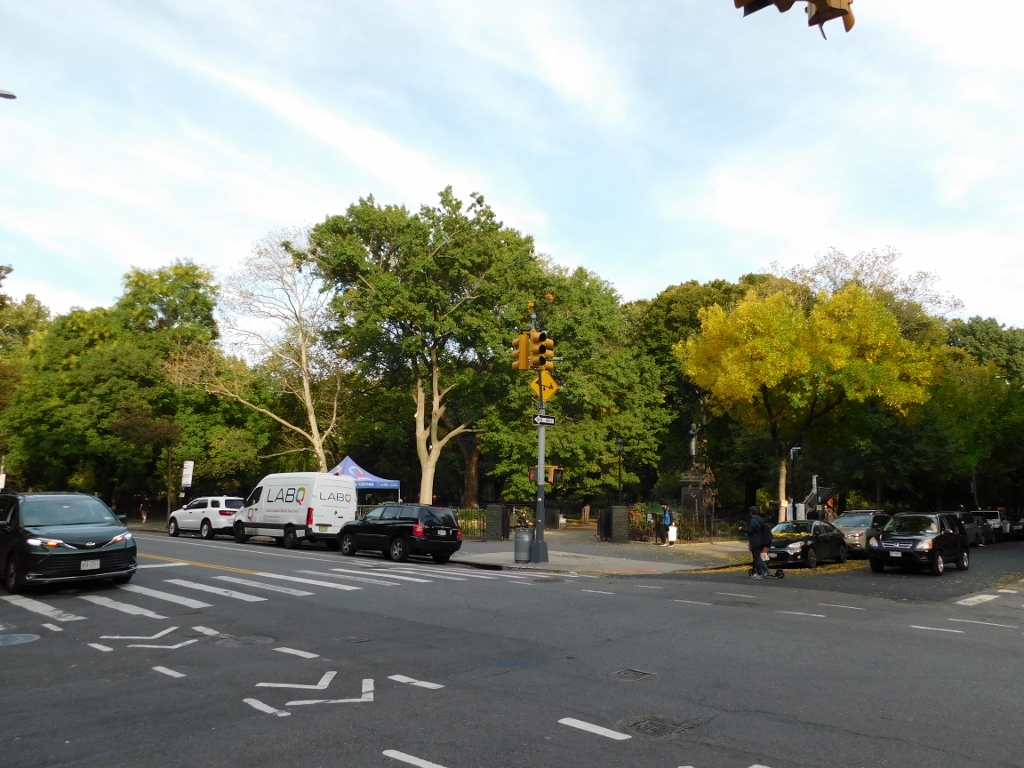 East Village
East Village
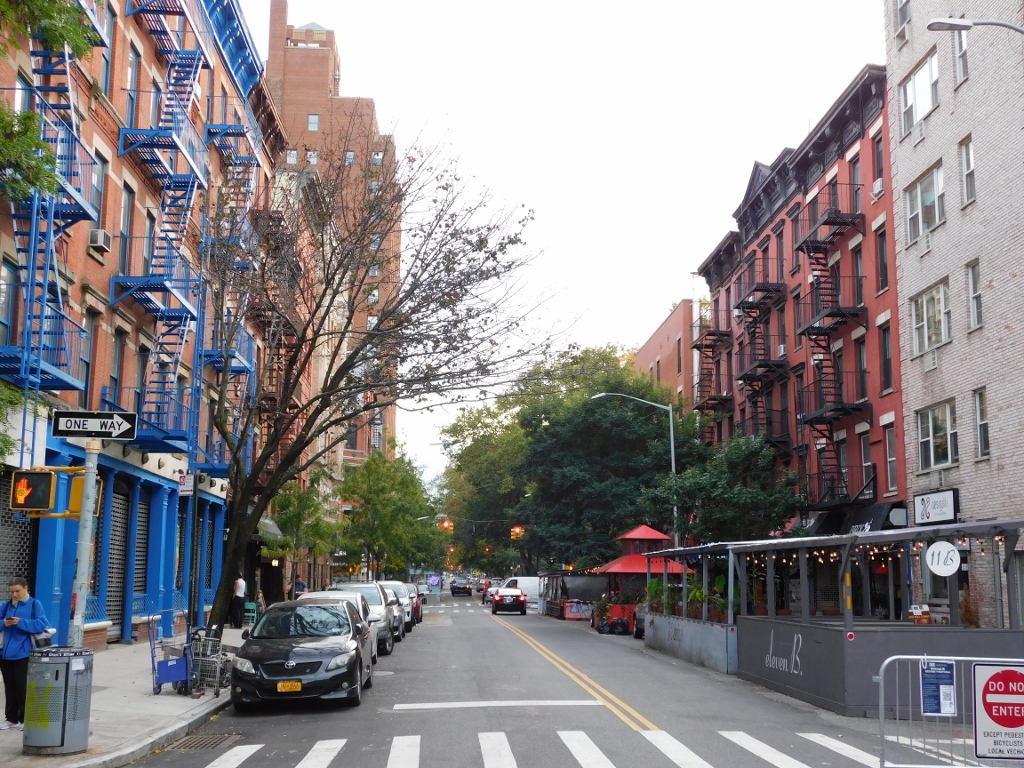 East Village
East Village
On my way back to my New York home, I changed underground trains and thus, having left Manhattan, I resurfaced at one of the stations. While I was waiting for the next train, I took photos of some of the sights I could see from there. Although tired, I was exceptionally content with this day, too.
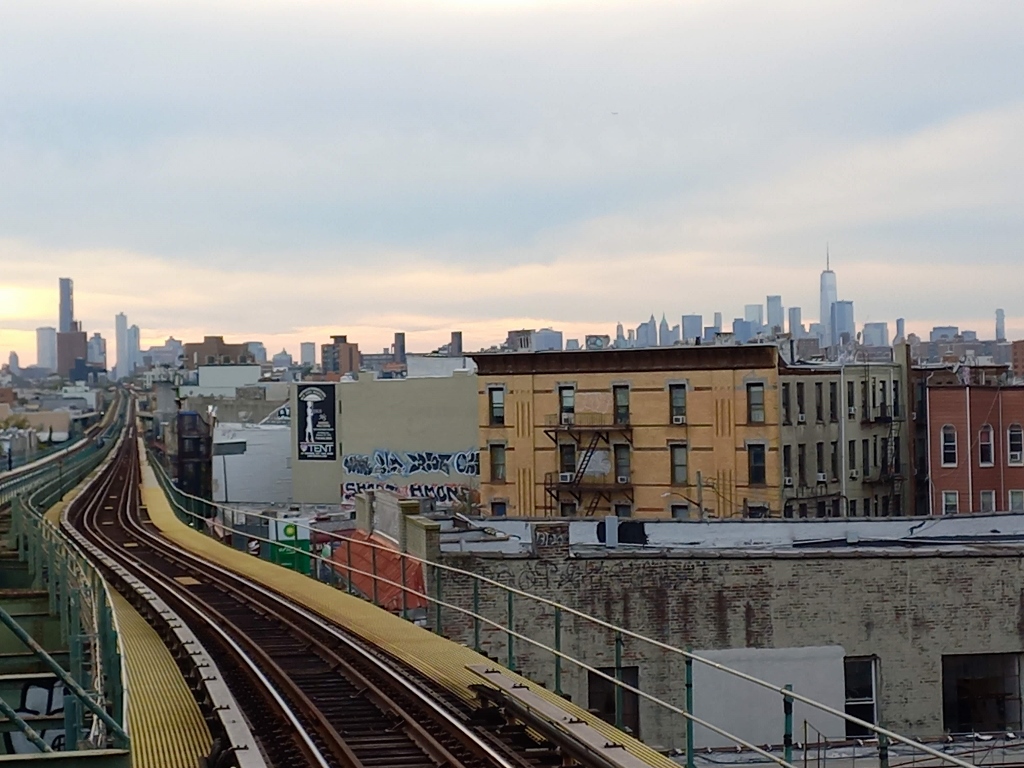 New York, a detail
New York, a detail
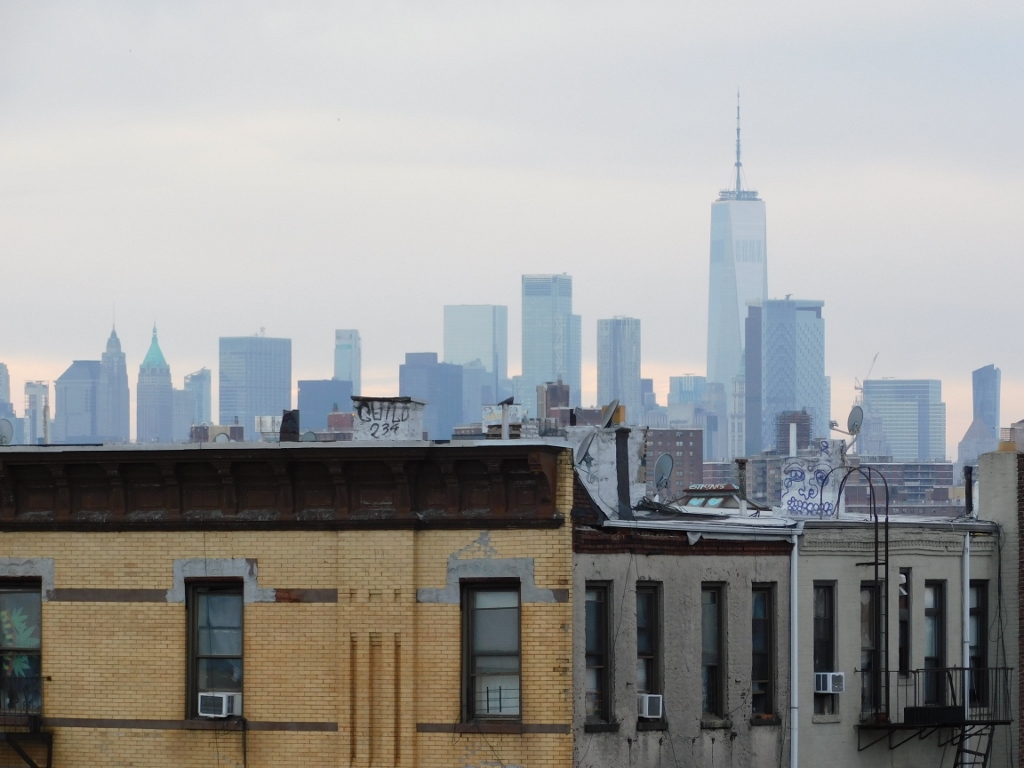 New York, a detail
New York, a detail
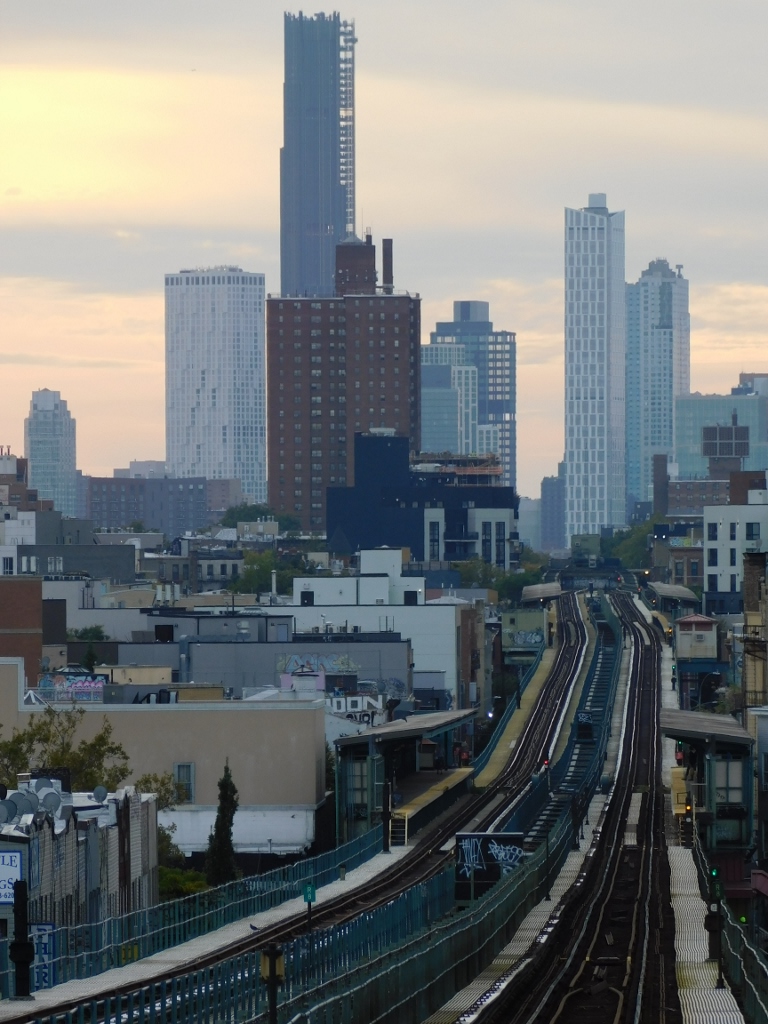 New York, a detail
New York, a detail
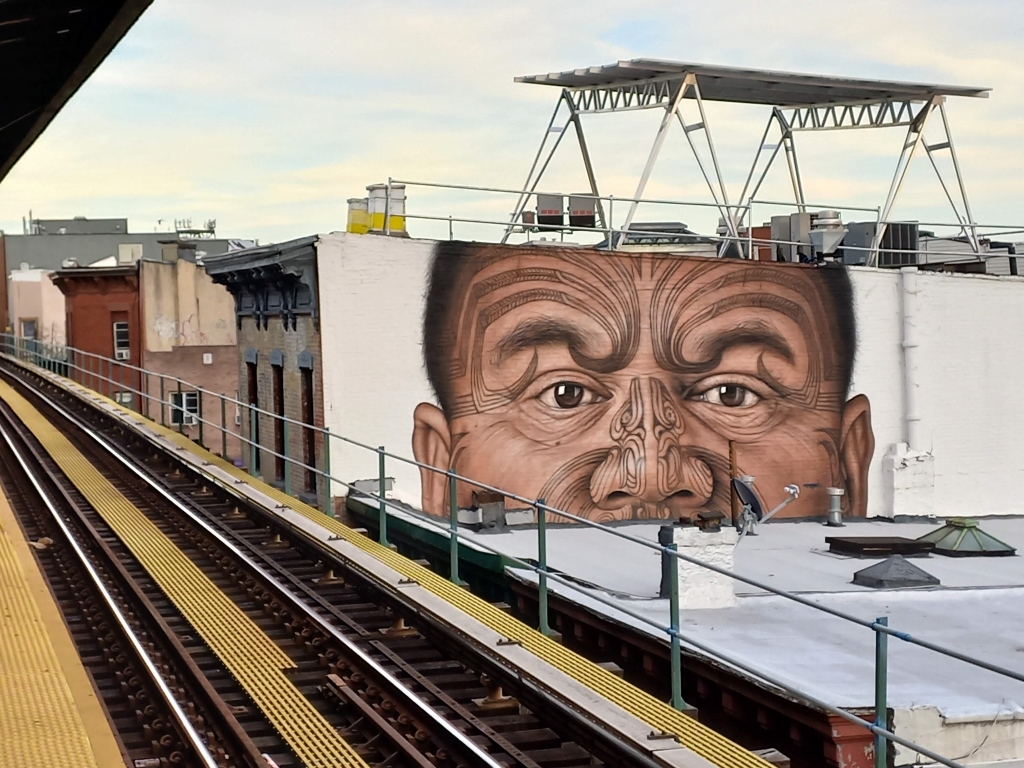 New York, a detail
New York, a detail